A large percentage of chess skills ride on pattern recognition. For instance, you see certain pieces placed in certain positions and immediately recognize a pattern. In addition, chess openings are patterns, chess tactics in the middle games and endgames are patterns, and endgame positions are patterns. Therefore, Checkmate Patterns is a logical concept every ambitious chess player must grasp.
These checkmate patterns help us devise strategic plans to win the game by checkmate, depending on the position. In addition, they bear names to simplify checkmate patterns for easier identification and learning.
Some checkmate patterns are easier to recognize than others, so stay glued as we stack up these checkmate patterns according to player levels.
Beginner checkmate patterns
These checkmate patterns pose to be both the easiest ones to achieve and often the most primary ones to learn. We will classify them into two:
- Conventional Beginner Checkmate Patterns
- Unconventional Beginner Checkmate Patterns
Conventional Beginner Checkmate Patterns
- Ladder / Lawnmower Mate
- Back-rank Mate
- Blind Swine Mate
- Kill-box Mate
- Four Basic Checkmate Patterns
Unconventional Beginner Checkmate Patterns
- Scholar’s Mate
- Fool’s Mate
Conventional Beginner Checkmate Patterns
1. Ladder / Lawnmower Mate
Materials: Queen/Rook, Rook
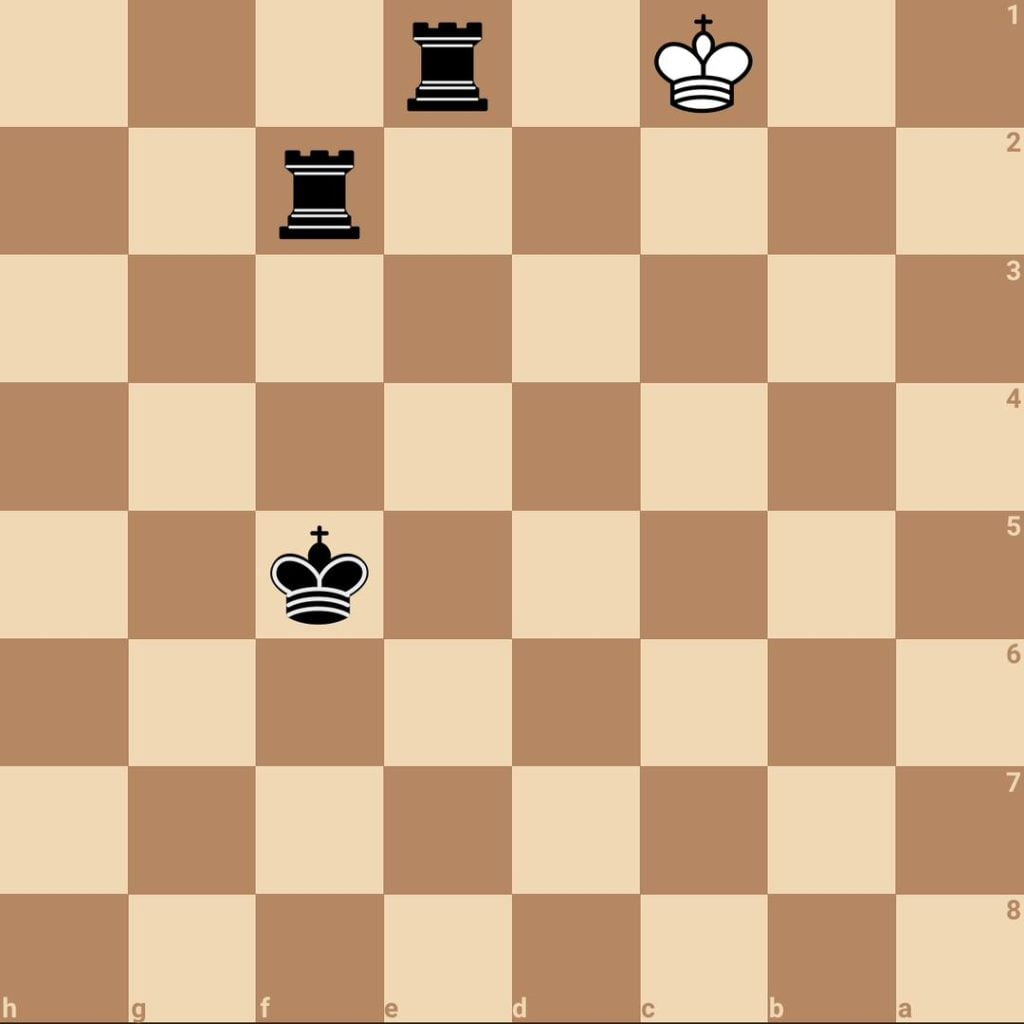
This checkmate pattern draws its name from its step-by-step closing toward a particular direction. For example, using a “ladder” illustration, a person climbing a ladder uses the stabilizer bars step by step towards the top. For a lawnmower, the machine mows the lawn, radius after radius, from one end of the lawn to the other.
Therefore, this checkmate pattern encloses the king with major pieces(Rooks and Queens) rank by rank or file by file until the king is checkmated. It can be performed with two queens, two rooks, a rook and a queen.
2. Back-rank Mate
Materials: Queen/Rook, Enemy pawns/pieces
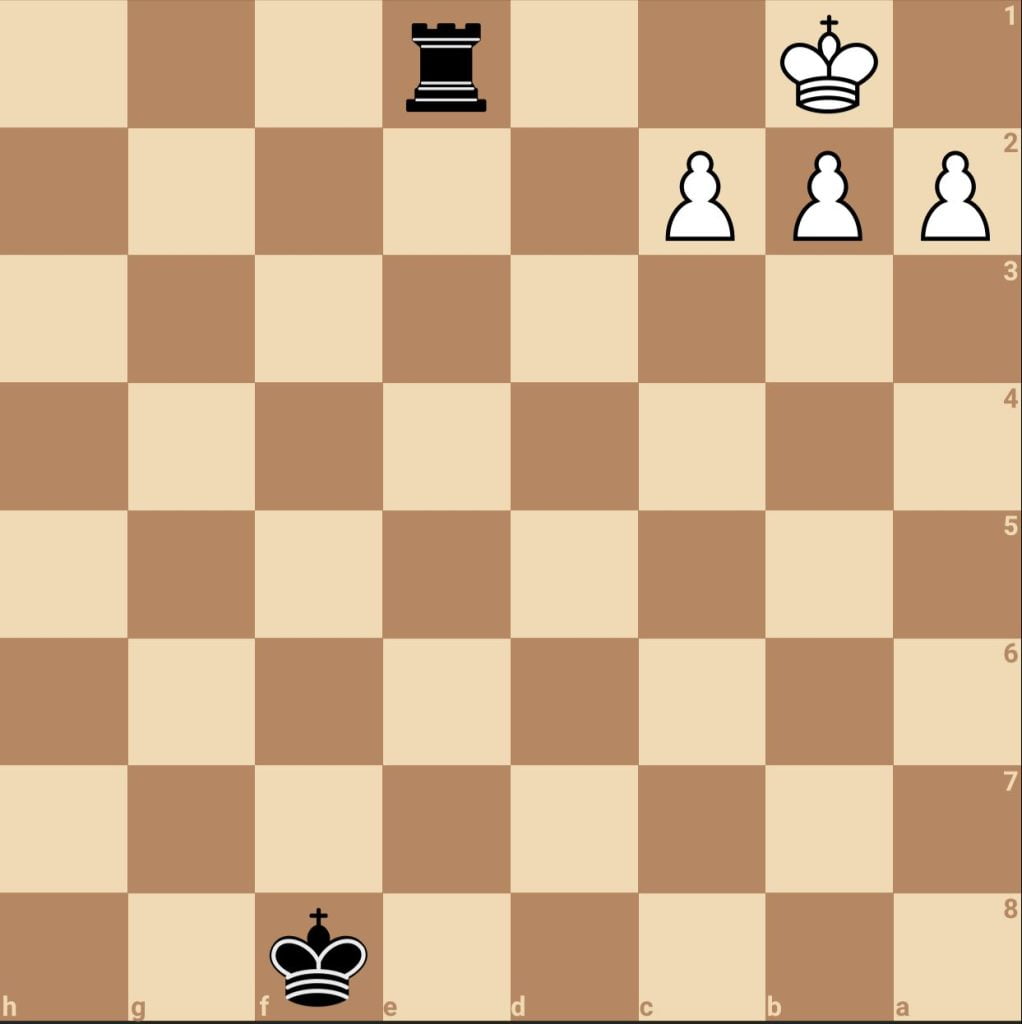
As a beginner looking to learn checkmate patterns, you’d know what a rank is. Therefore, a back-rank refers to your domain’s bottom rank or ground zero (black or white). This type of checkmate pattern requires the help of your opponent’s pieces, often pawns, to achieve.
Players often lose to a back-rank mate after castling and failing to advance a pawn near the castling site to create a flight square. Back rank mates can only be performed by major pieces and often occur in the middle game.
3. Blind Swine Mate
Materials: Two rooks

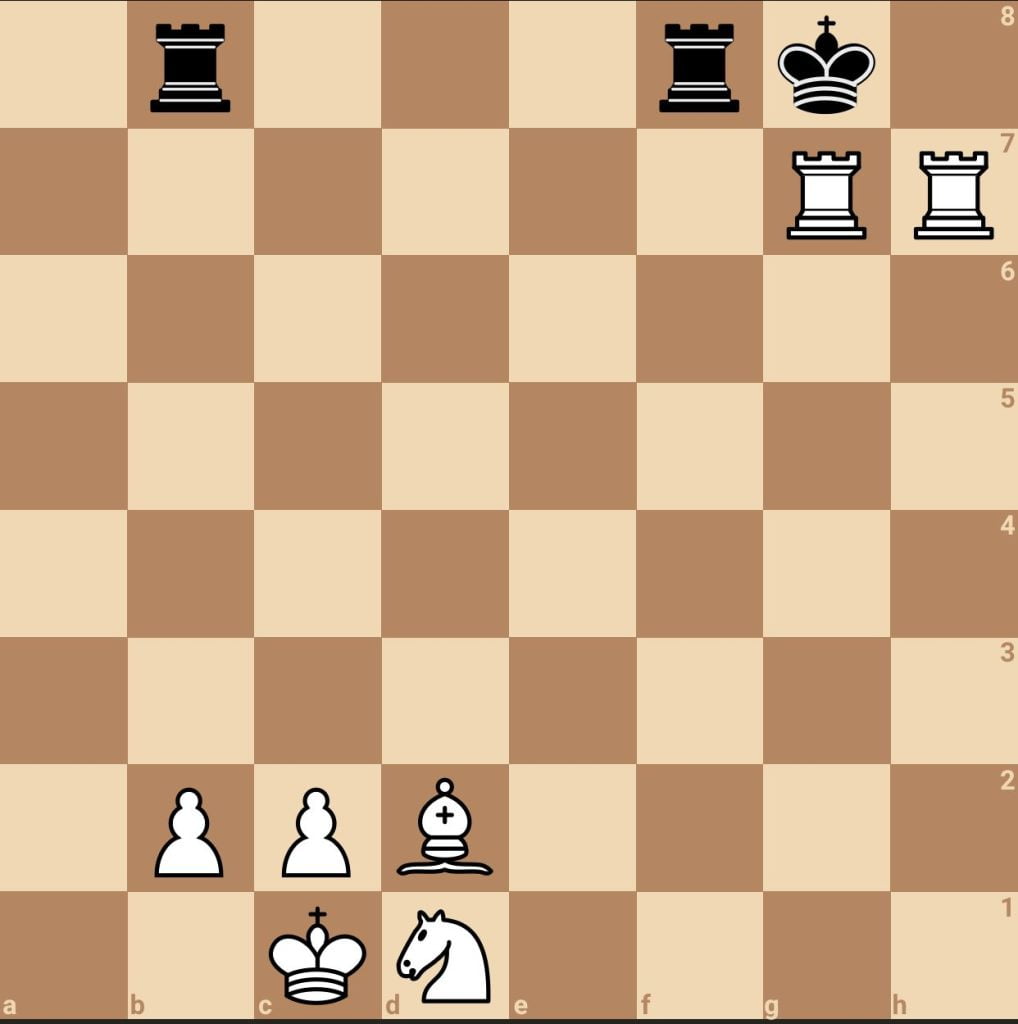
This checkmate pattern occurs with a rook battery (connected rooks) on the seventh rank (Rank 2 or 7). The king is enclosed to the back-rank by the rooks while an enemy piece, often a rook, locks the king to two files. These two files are stationed at the edge of the board(g and h, or a and b) to make checkmate possible.
4. Kill-Box Mate
Materials: Queen, Rook

This checkmate pattern uses the major pieces. First, the rook delivers the final checkmate blow while being protected on the diagonal by the queen. Then, the queen is placed two files away from the rook and the enemy king.
This mate gives us the 3-by-3 box shape named after this checkmate pattern. The king is locked in a box enforced by a rook and queen while on the board’s edge. However, there are cases where the king can be off the board’s edge. The squares of the file or rank that keeps the king boxes will be occupied by friendly or enemy pieces.
Four Basic Checkmate Patterns
- Queen Mate
- Rook Mate
- King and Two Bishops Mate
- Bishop And Knight Mate
5. Queen Mate
Materials: Queen, King
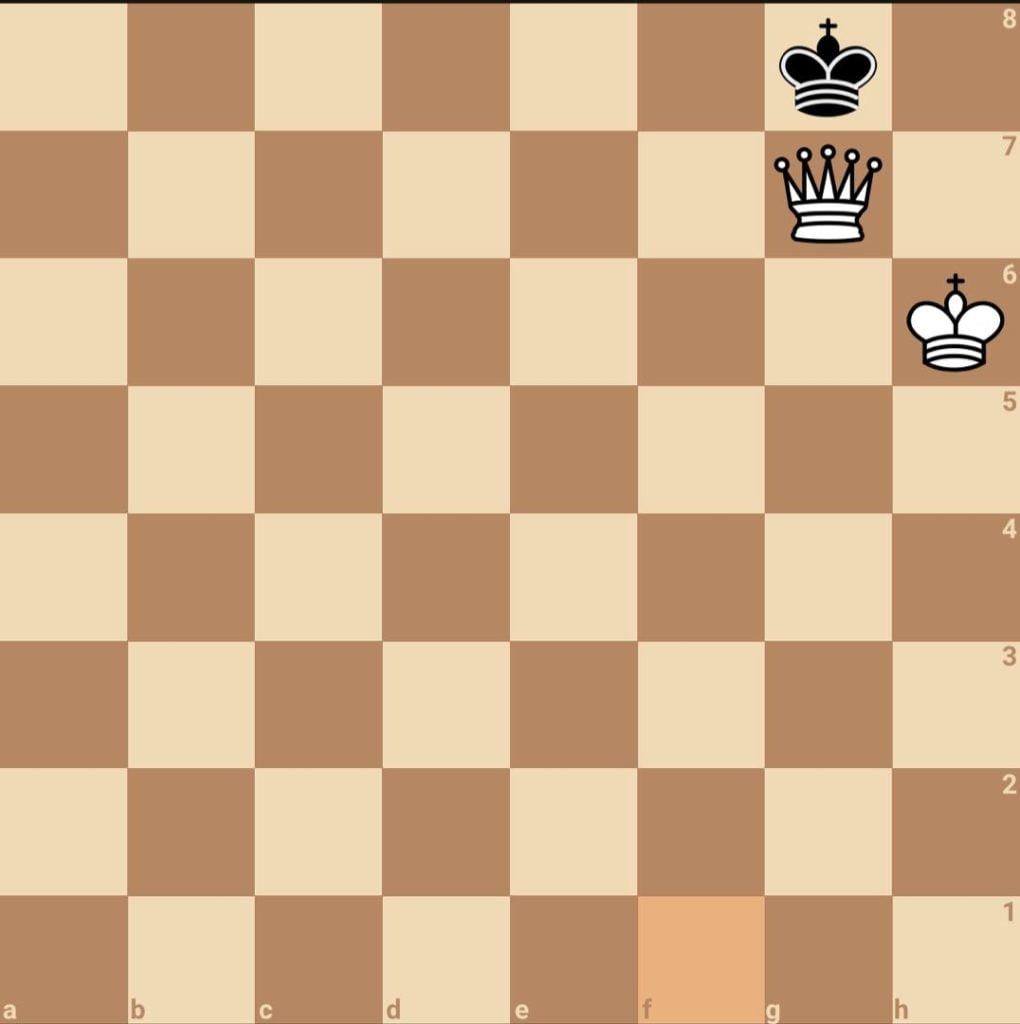
This type of mate often happens in the endgame. The queen works with her king against the enemy king. In most cases, the queen in this scenario is a promoted pawn, and the position most likely to lead to a Queen Mate is a King and pawn Vs King endgame.
The king and queen force the enemy king to the corner of the board. Then the enemy king is forced into a Zugzwang position, after which the queen lands the killer blow.
6. Rook Mate
Materials: Rook, King
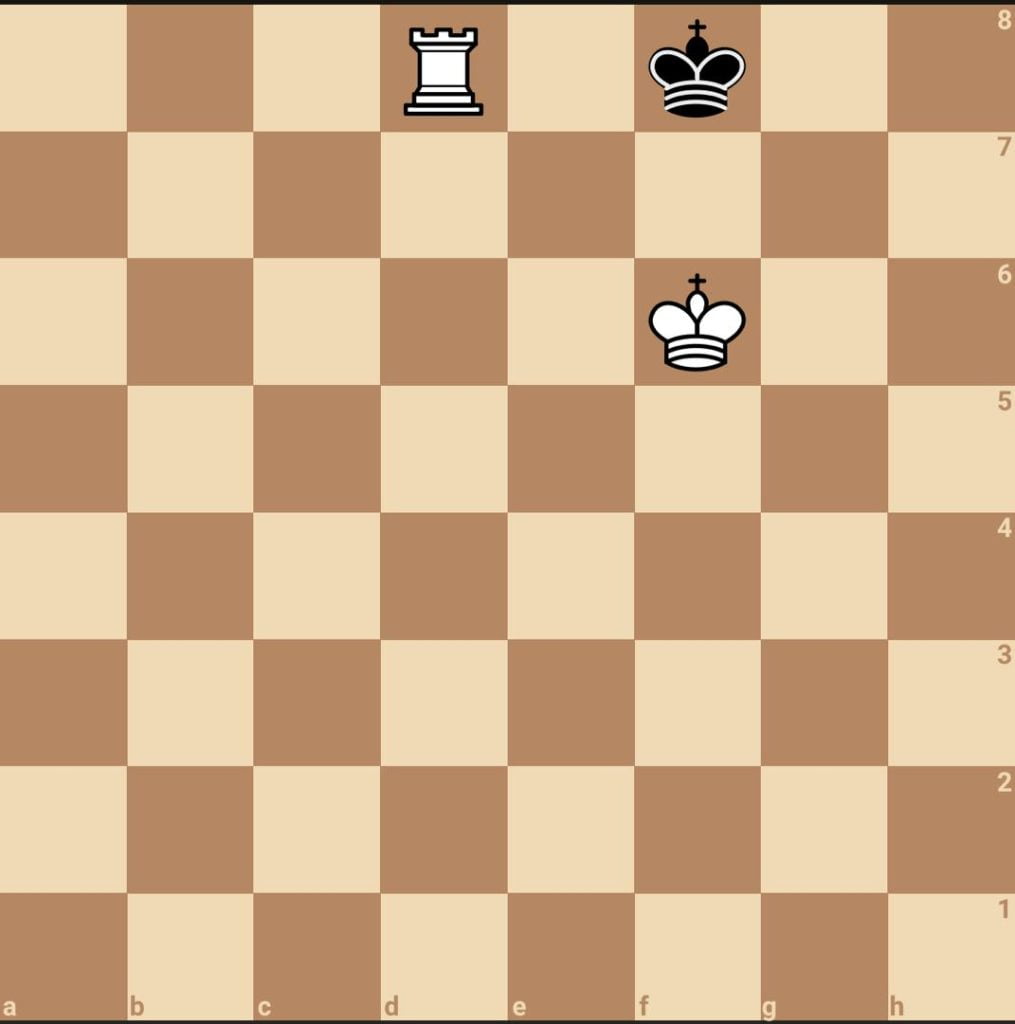
This mate is one of the most recurring checkmate patterns in chess. The winning side has sufficient mating material in a lone rook and a king, but they must maneuver carefully to avoid losing their rook or drawing the game. Like the Queen Mate, the winning side must force the enemy king to the board’s edge.
An endgame tactic called “OPPOSITION” is applied to give the rook the tempo required to confine the king and ultimately land the finishing blow slowly.
7. King And Two Bishops Mate
Materials: King, Two Bishops
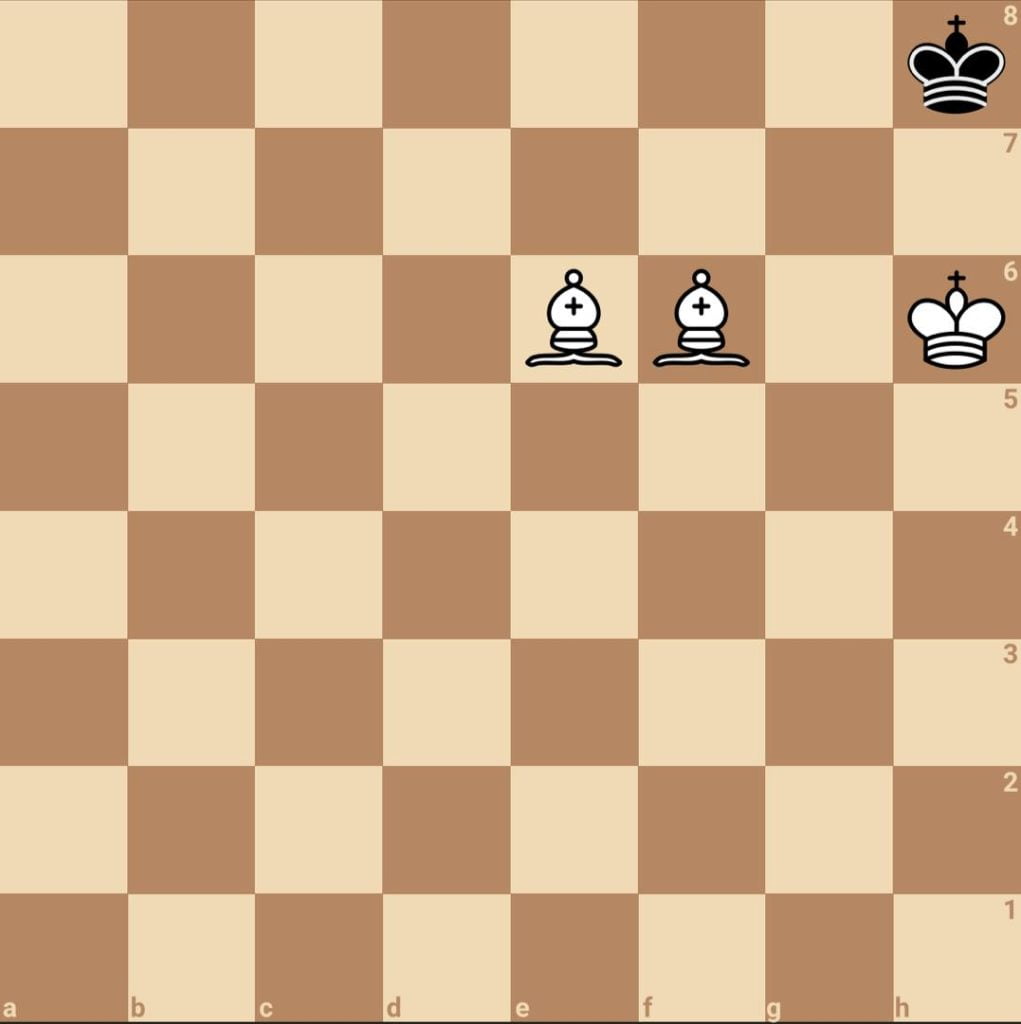
This checkmate pattern always occurs in the endgame. The attacking king opposes the enemy king while the bishops enclose the king to the corner edge of the board. The bishops force the king to the edge through diagonals in a similar fashion to the ladder mate but with the help of their king’s opposition to prevent a horizontal or vertical escape.
Basic checkmates with minor pieces are more complicated to maneuver through than basic checkmates with major pieces.
8. Bishop And Knight Mate
Materials: Bishop, Knight, King

This mate is, by far, the most difficult of the four basic checkmates to master. Once again, the attacking king is required to oppose the enemy king. Then either the knight or the bishop seals off the flight square that leads against the direction of the board’s corner. Finally, once the king reaches the corner, either of the minor pieces can deliver a checkmate.
This checkmate can take a few dozen moves to achieve. Therefore, whoever desires checkmate must be patient and get the technique right. Oppose the enemy king, harmonize your pieces with one another, and force the king to the corner of the board.
Unconventional Beginner Checkmate Patterns
9. Scholar’s Mate
Materials: Queen, Bishop, Enemy pieces
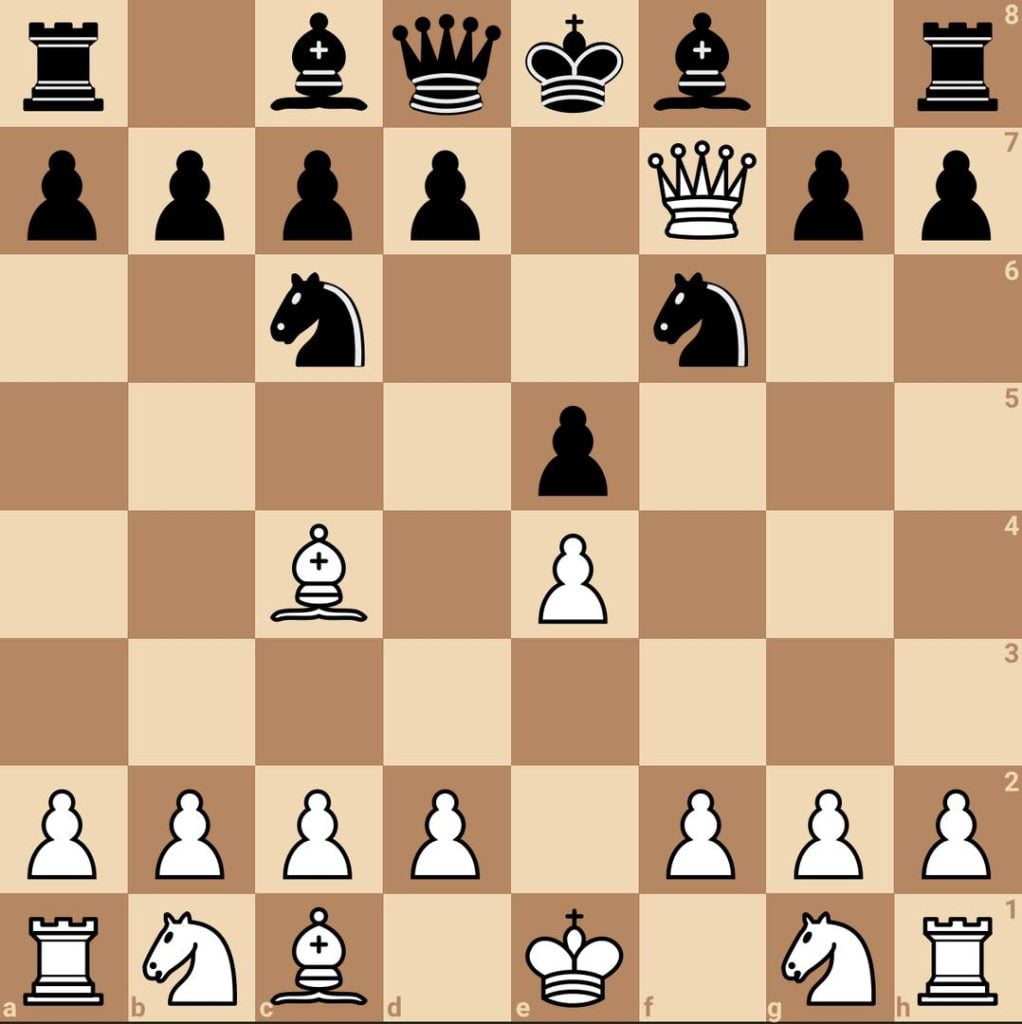
This mate is arguably the most popular checkmate pattern yet. As newbies, we all might’ve suffered a loss to this checkmate pattern that occurs in the opening four moves of the game. The Scholar’s Mate starts with 1.e4 to create a route for the queen and bishop to develop.
Let’s assume black responds with 1…e5, 2.Bc4 follows, aiming at the primary target of the checkmate—the f7-pawn. 2…Nc6 is followed by 3.Qh5, once again, attacking the f7-pawn. And if black somehow misses the double threat to the f7-pawn and plays Nf6 to threaten the queen, white wins with Qxf7#.
There! CHECKMATE IN FOUR MOVES!
10. Fool’s Mate
Materials: Queen, Enemy pieces

The name seems funny, but there’s no way to describe this checkmate pattern other than utter foolishness. It is the shortest possible checkmate pattern simply because the opponent offers a grand opportunity right at the start.
White tries to be tricky with 1.f3 while black responds with a mature 1…e5. White plays 2.g4 and 2…Qh4 ends the game.
A fool’s mate indeed!
Intermediate Checkmate Patterns
With Major Pieces
11. Anderssen’s Mate
Materials: King, Rook, Pawn
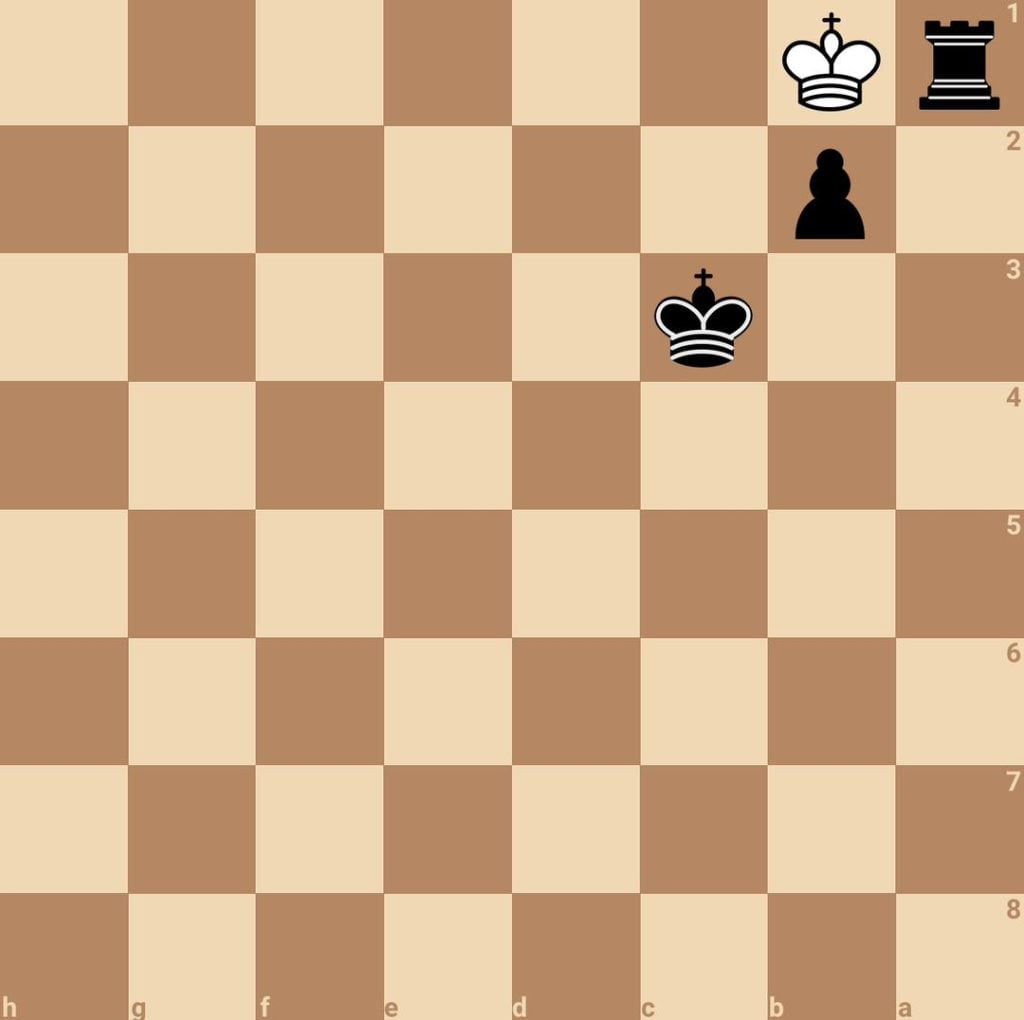
In this checkmate, the enemy king is on the board’s edge, with other pieces occupying all its flight squares. A rook delivers the final blow while being protected by a pawn, which the king, in turn, protects. It is similar to the Mayet Mate.
12. Damiano’s Mate
Materials: Queen, Pawn, Enemy Piece
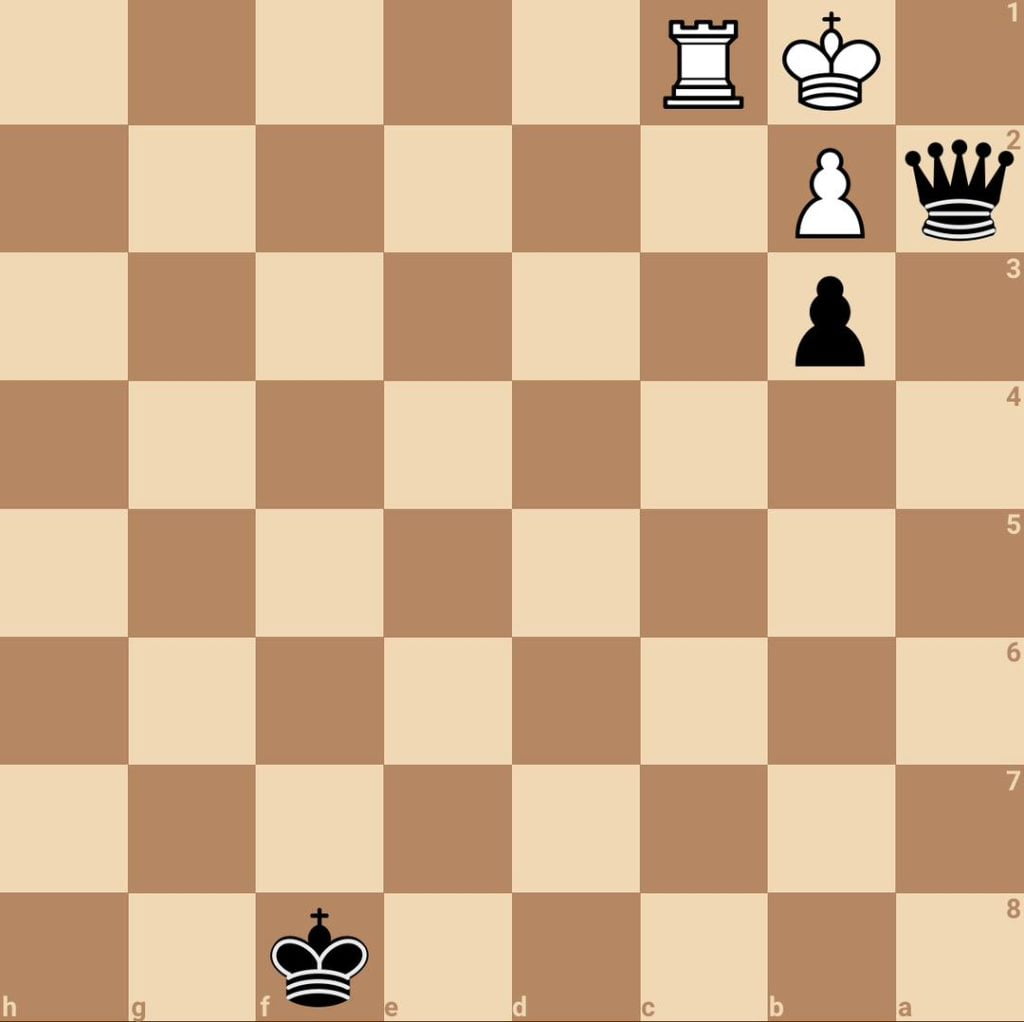
The pawn covers a flight square of the enemy king on the edge of the board while the queen seals the checkmate with the pawn’s protection. An enemy piece also occupies a flight square for the king. The checkmate pattern is named after Pedro Damiano, who first published it in 1512.
13. Epaulette Mate
Materials: Queen, and sometimes, King
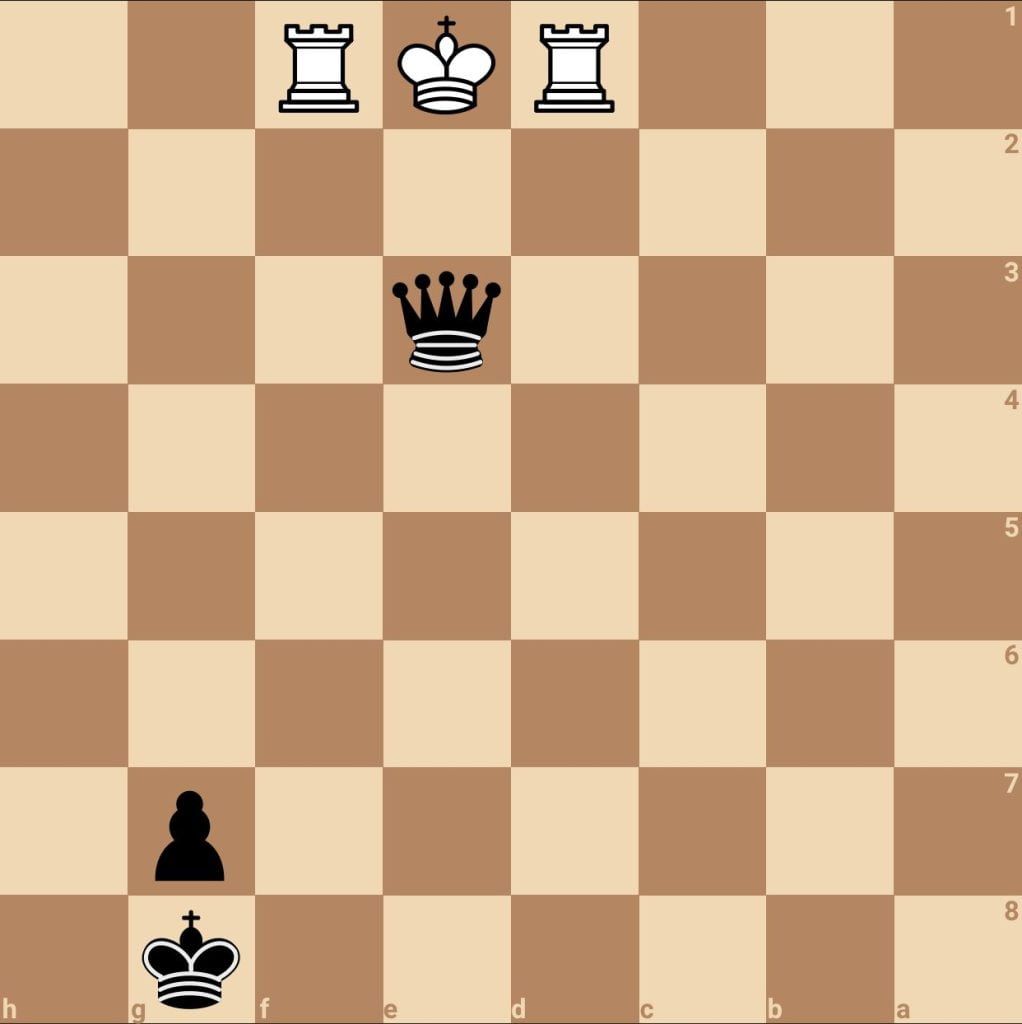
In this mating pattern, friendly pieces sandwich the enemy king on files or ranks at the board’s edge. The queen then delivers the checkmate independently or with her king’s help. This checkmate pattern gets its name from the similarity in appearance with the ornamental shoulder pieces for ranks used on military uniforms.
14. Lolli’s Mate
Materials: Queen, Pawn Enemy Pieces
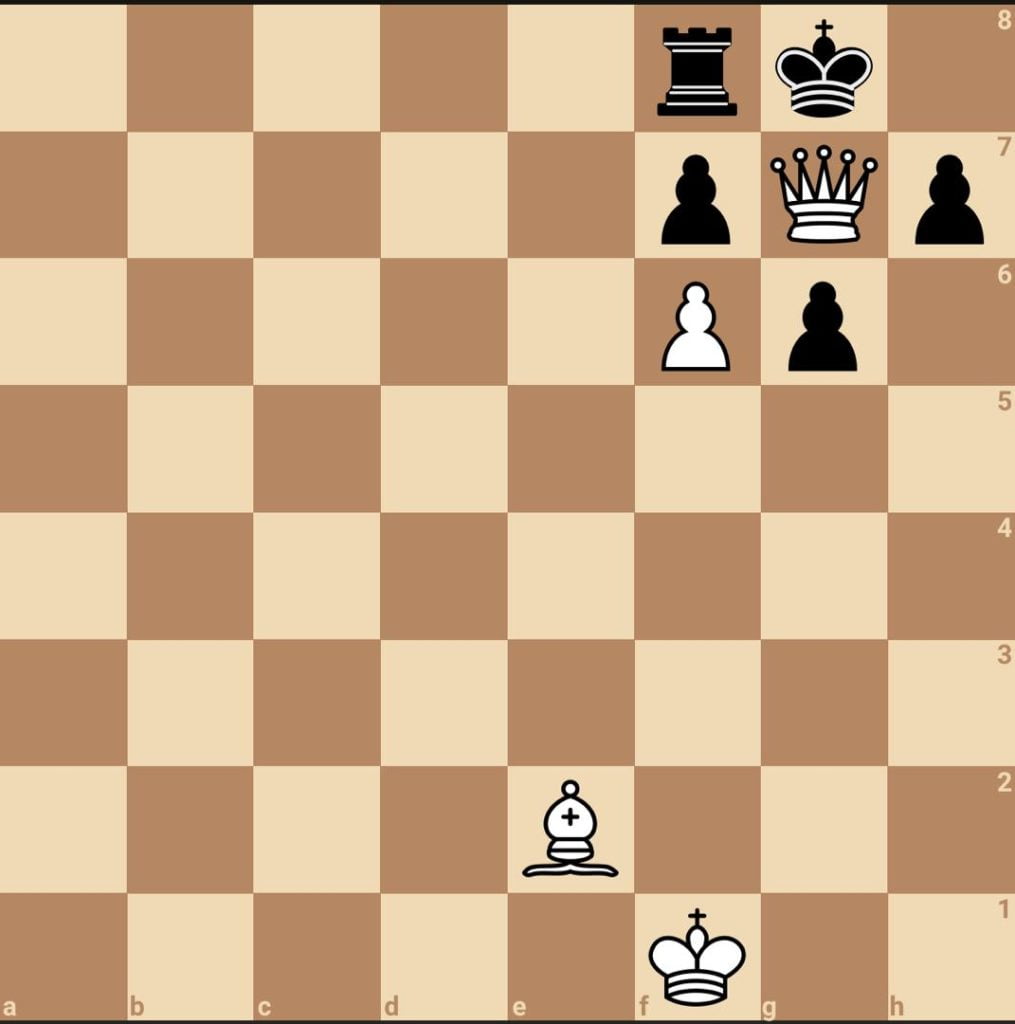
It has close resemblances to the Damiano Mate. It often happens to a castled king. A pawn is advanced to the 6th rank (or 3rd rank) and obstructs an unmoved pawn. The queen is adjacent to the pawn two files away, with an enemy pawn between the pawn and the king.
The king is rendered hopeless, and unless a diagonal-moving piece like a bishop or queen chases away the threatening queen, the game will end on the next move.
15. Triangle Mate
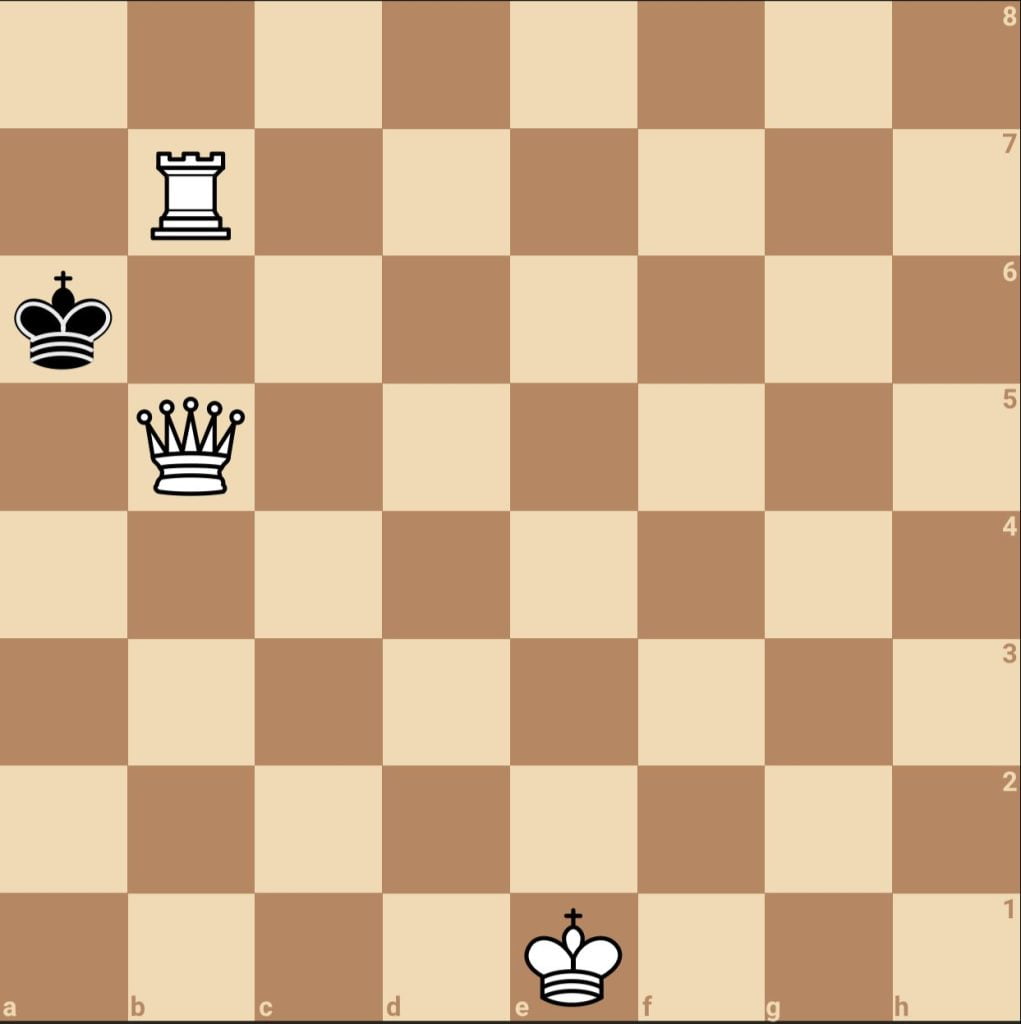
Materials: Queen, Rook
This checkmate pattern is highly similar to the Kill box mate, but this time, the queen delivers the checkmate, not the rook. The triangle reference is the shape formed by the rook, checkmated king, and the queen.
With Minor Pieces
16. Blackburne’s Mate
Materials: Two Bishops, Knight or Enemy Piece
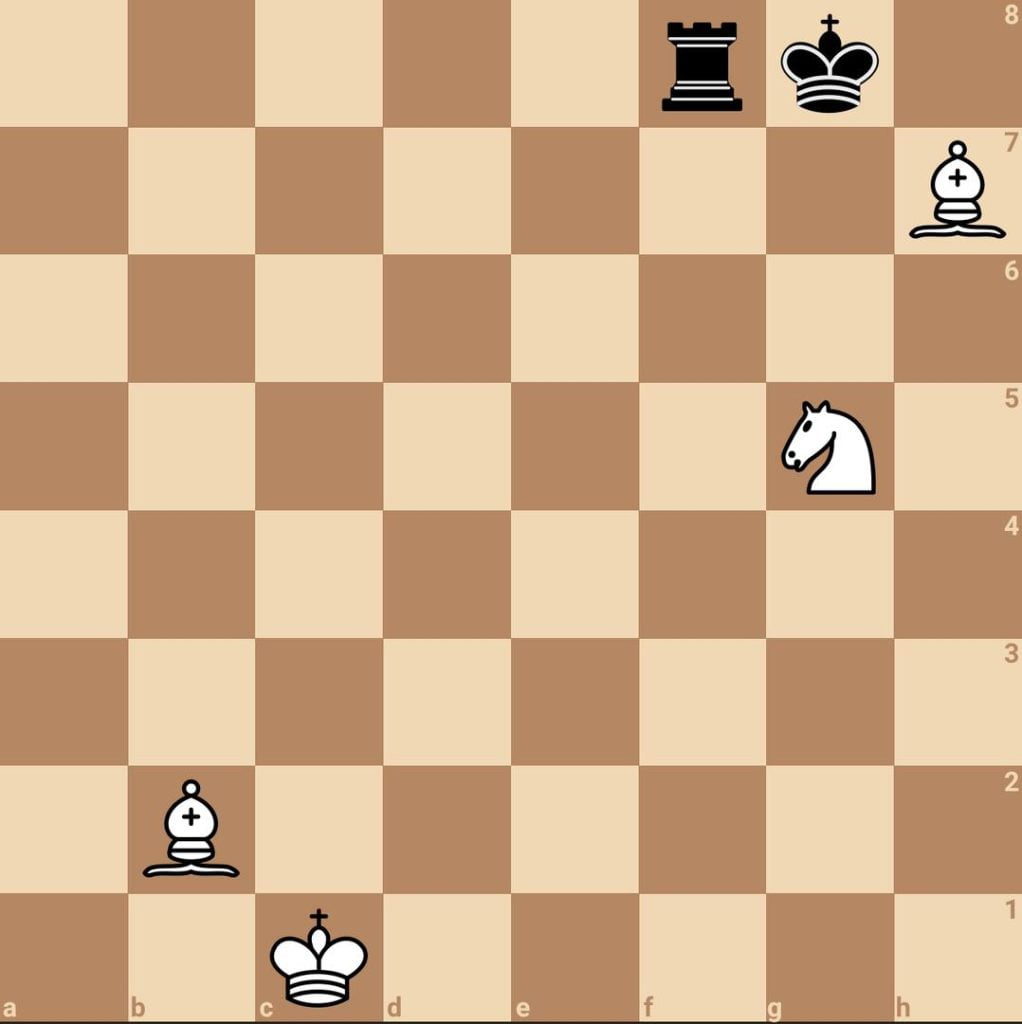
This checkmate pattern uses three minor pieces to achieve a checkmate. First, the knight and a bishop control the flight squares of the king at the board’s edge. But in some cases, a friendly piece occupies a flight square of the distressed king. This rare checkmate pattern takes its name after Henry Blackburne.
17. Boden’s Mate
Materials: Two Bishops, Enemy Pieces

Two pieces occupy the flight squares of a king at the edge(back rank or extreme file) of the board in this checkmate pattern. One of the attacking bishop pairs seals off the final flight square while the other bishop lands checkmate. Both bishops attack through cross-diagonal directions.
18. Double Bishop Mate
Materials: Two Bishops, Enemy Pieces
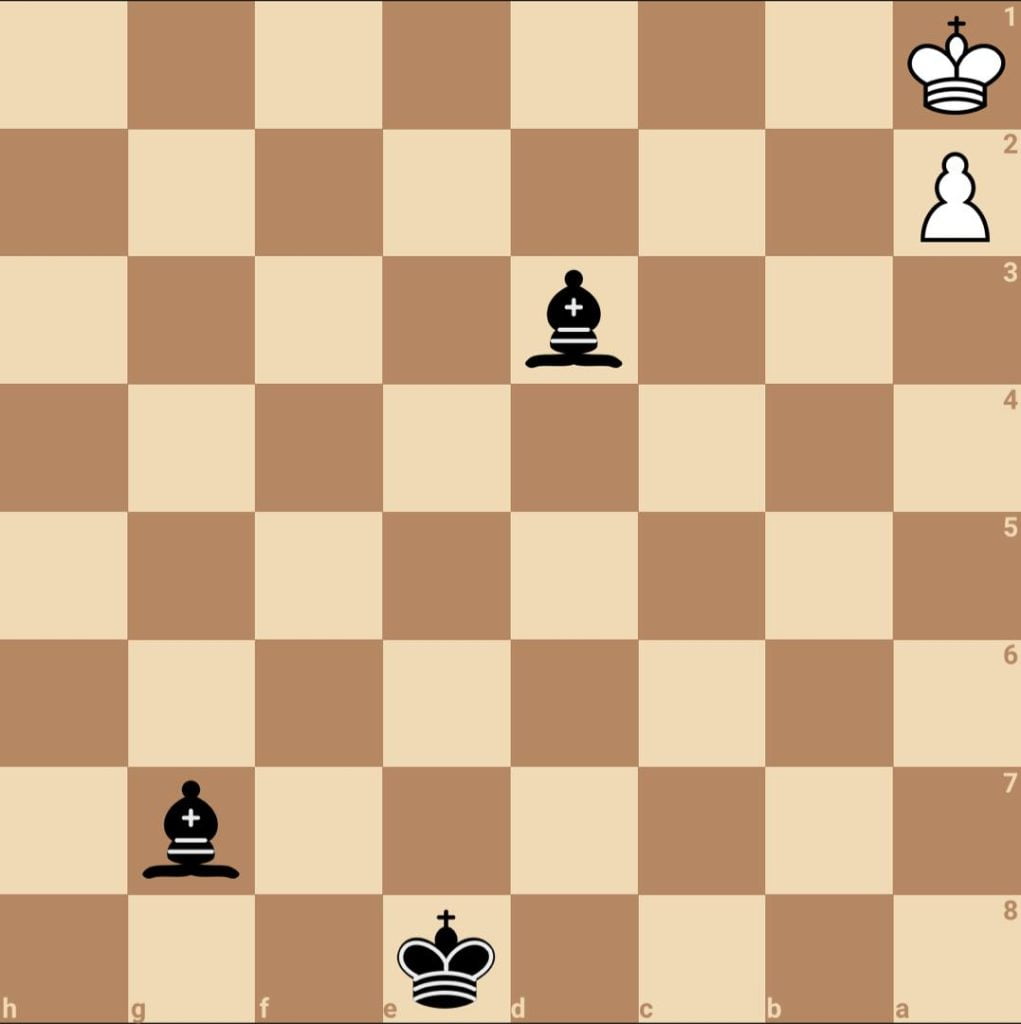
Checkmate patterns with minor pieces are slightly more challenging to achieve than others. But the Double Bishop Mate is marginally more straightforward than the Two Knight Mate because the bishops are long-ranged pieces. This checkmate pattern is possible in middle games and endgames and relies on support from enemy pieces.
The difference between the Double Bishop Mate and the Boden’s Mate is that the bishops attack in cross-diagonal directions in Boden’s Mate, but they attack in parallel diagonal directions in the Double Bishop Mate.
19. Legal’s Mate
Materials: Two Knights/Bishops, a Knight/Bishop (three minor pieces)
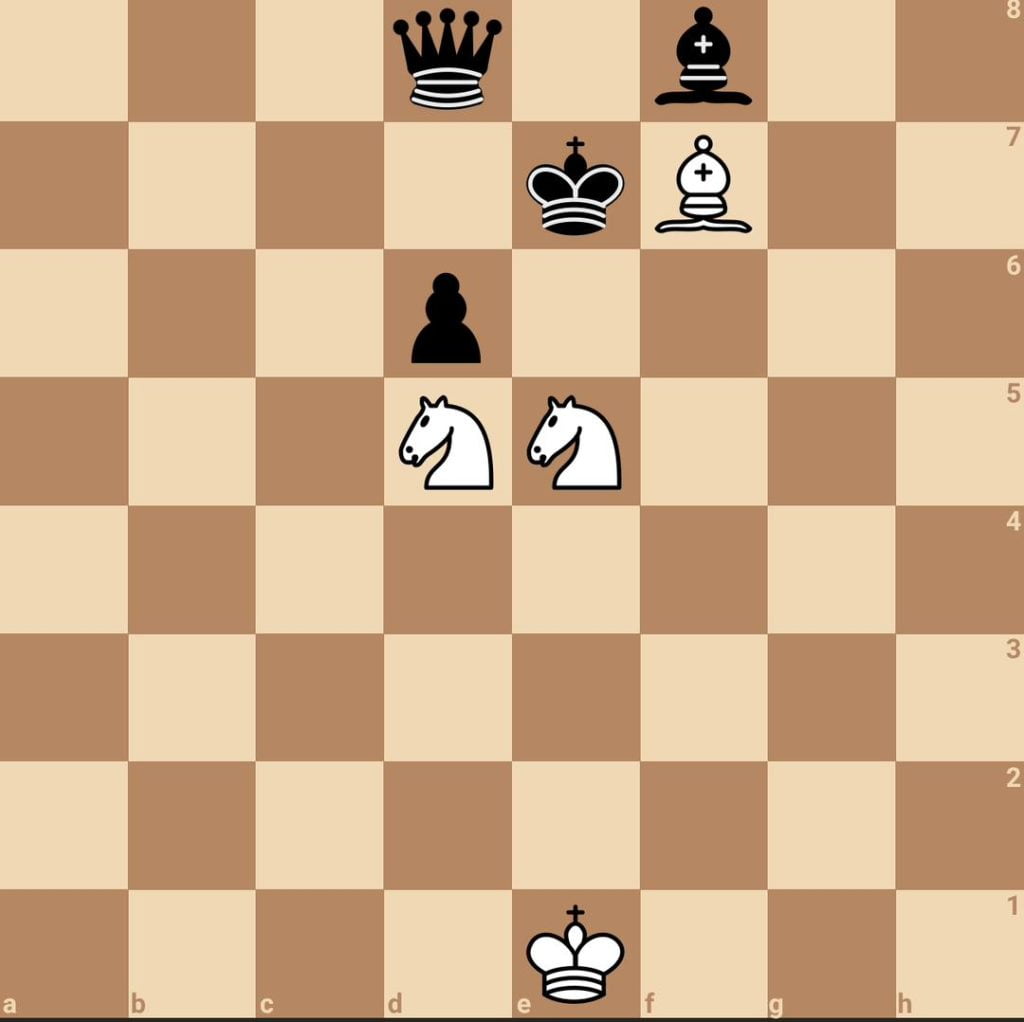
This checkmate pattern goes hand-in-hand with the Legal’s Trap. The trap occurs at the opening, with the attacking side giving up their queen to land a checkmate in the next two moves. Then, two minor pieces restrict the king’s flight square, while the third minor piece seals the checkmate.
The piece that delivers checkmate could either be a bishop or a knight. The player can avoid the checkmate if the opponent quells their greed and correctly accept the knight sacrifice rather than the queen sacrifice.
20. Smothered/Philidor Mate
Materials: Knight, Enemy pieces

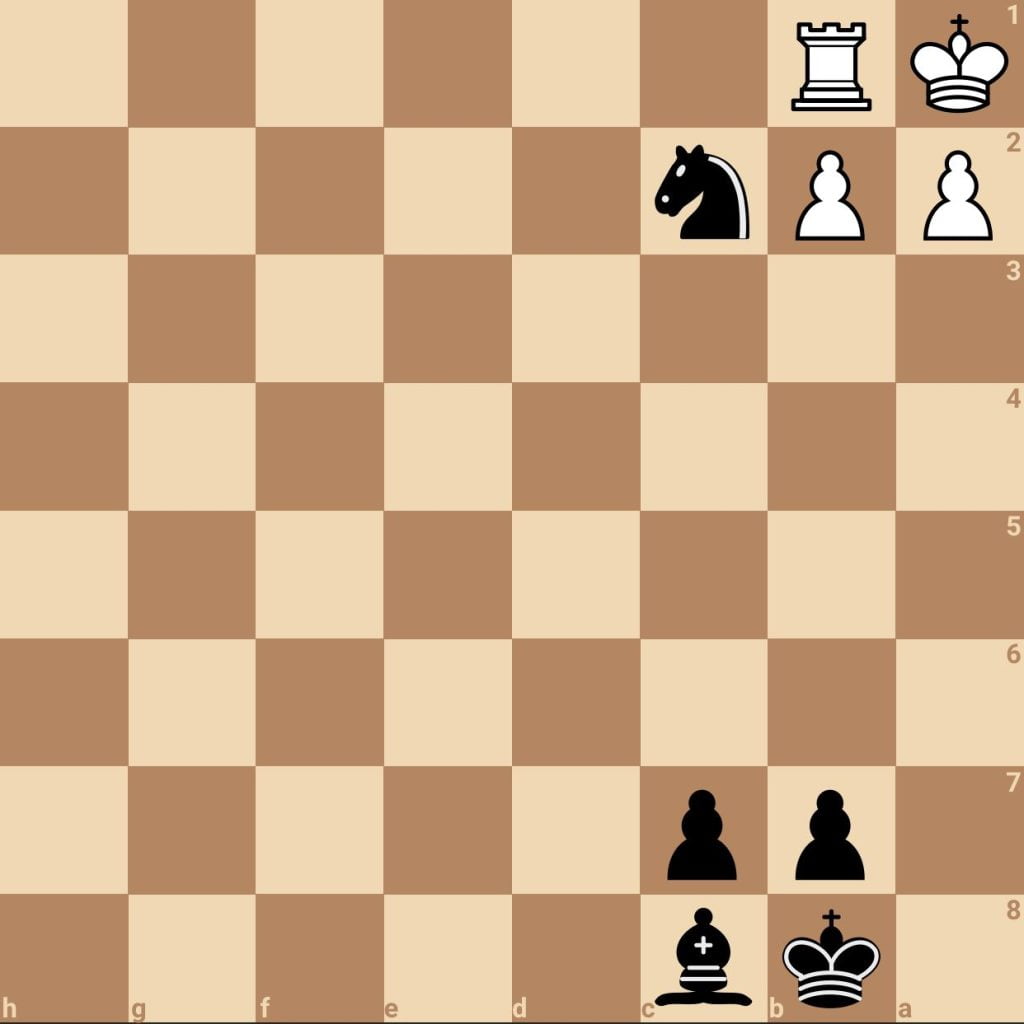
This checkmate pattern is arguably the fanciest checkmate in chess because the knight is the only attacking piece needed to land a checkmate. Although a queen sacrifice often comes before the checkmate, the knight doesn’t require a protector.
The sacrifice seals the king’s final flight square by forcing a friendly piece into the square.
Checkmate Patterns With Both Major and Minor pieces
21. Arabian Mate
Materials: Rook, Knight, and sometimes, enemy pieces
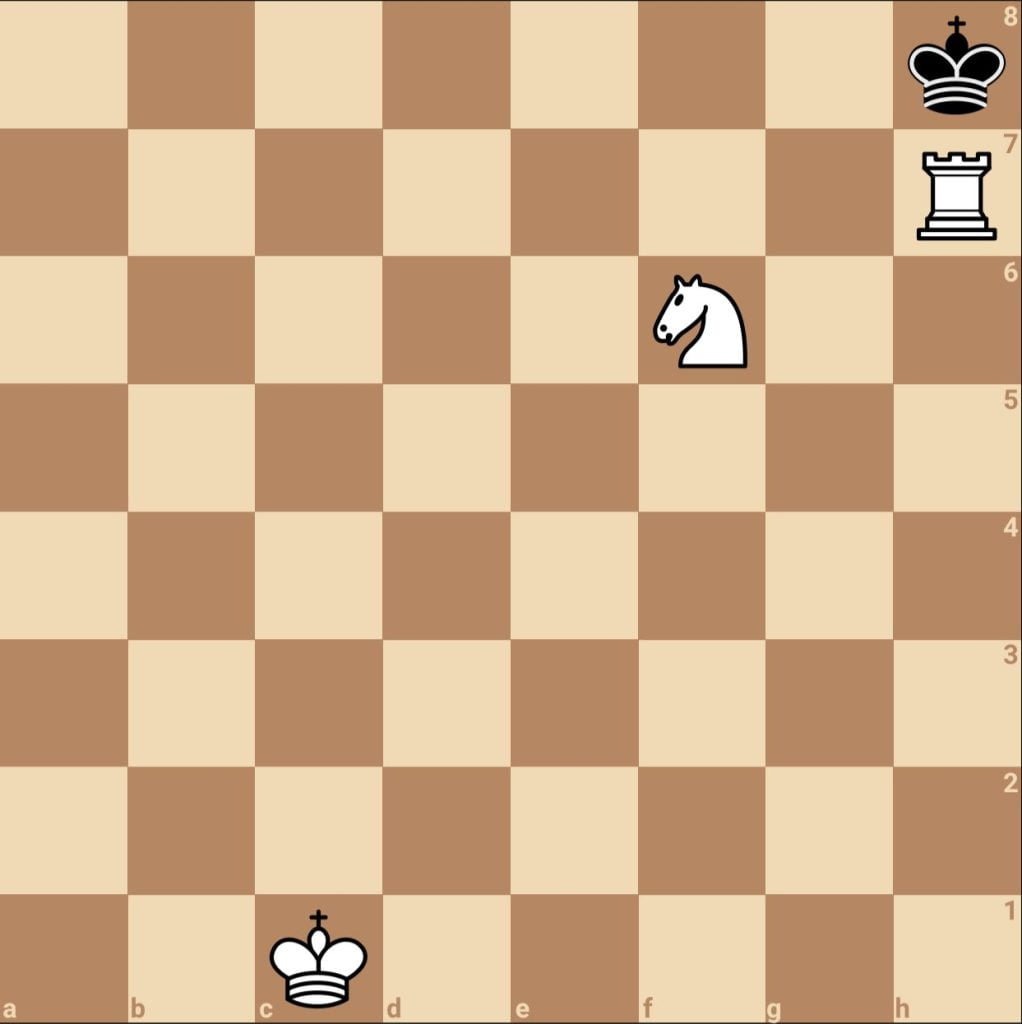
This checkmate pattern can happen either in the middle game or the endgame. As usual, the king is often at the edge of the board, but in most cases, he is surrounded by his pieces who restrict his escape.
The rook restricts the king from leaving the back rank or file while the knight encloses it from controlling the king’s last flight square. Then the rook lands a checkmate with the protection of the knight. It bears its name because of a mention in an Arabic manuscript from the 8th century.
22. Balestra Mate
Materials: Queen, Bishop, and sometimes, enemy pieces

The Balestra checkmate pattern requires the king to be on the extreme edge of the board once again. The queen would sit two files or ranks away from him to restrict him while the bishop delivered the checkmate.
23. Corner Mate
Materials: Rook, Knight, Enemy piece

Once again, the enemy king must be on the extreme corner of the board, as the name significantly obliges. The rook restricts the king to the square at the corner edge of the board. And with a friendly piece directly in front of the king, the knight delivers a checkmate.
24. Damiano Bishop’s Mate
Materials: Queen, Bishop
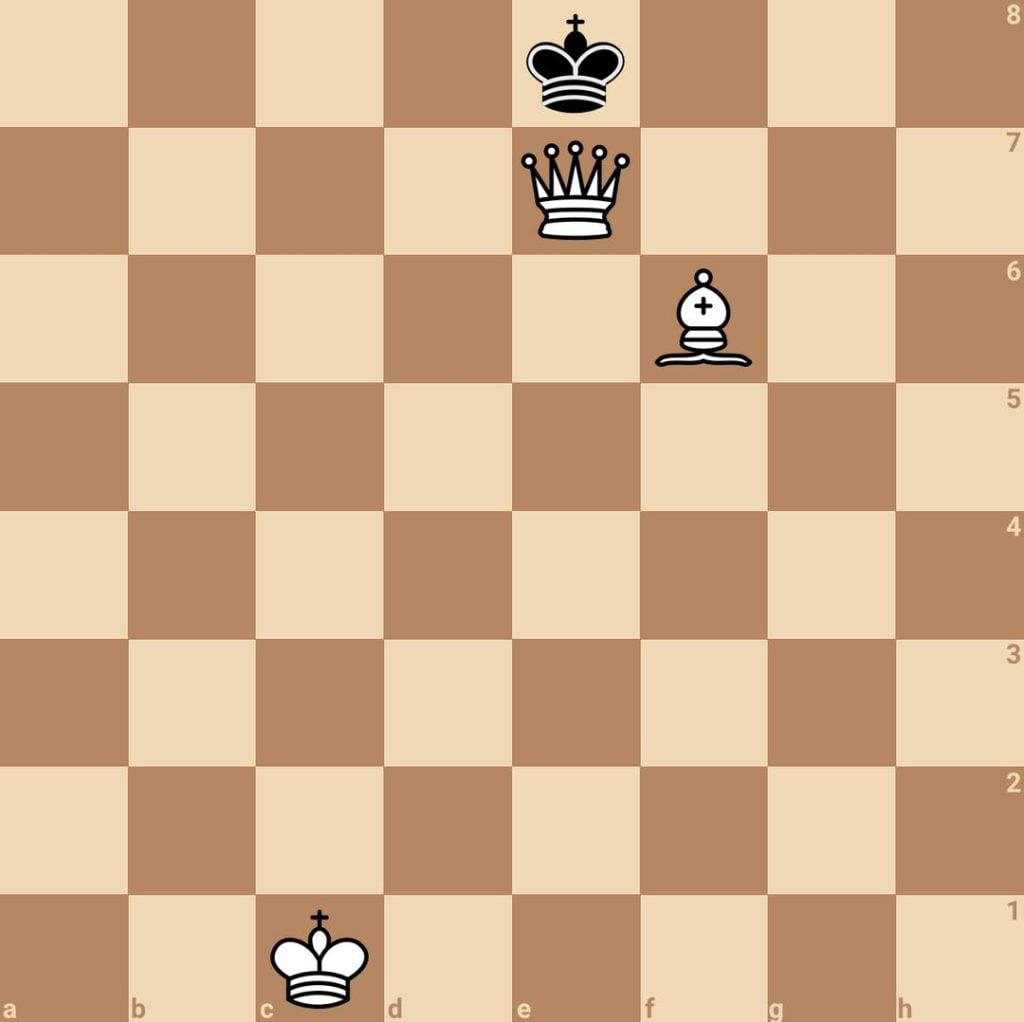
This checkmate pattern takes its name after Pedro Damiano. It is one of the easiest checkmates to achieve in chess because it involves using a Queen-Bishop battery. The queen delivers the checkmate while being protected by the bishop. This checkmate threat is used in all levels of chess.
25. Greco’s Mate
Material: Queen, Bishop, enemy pawn
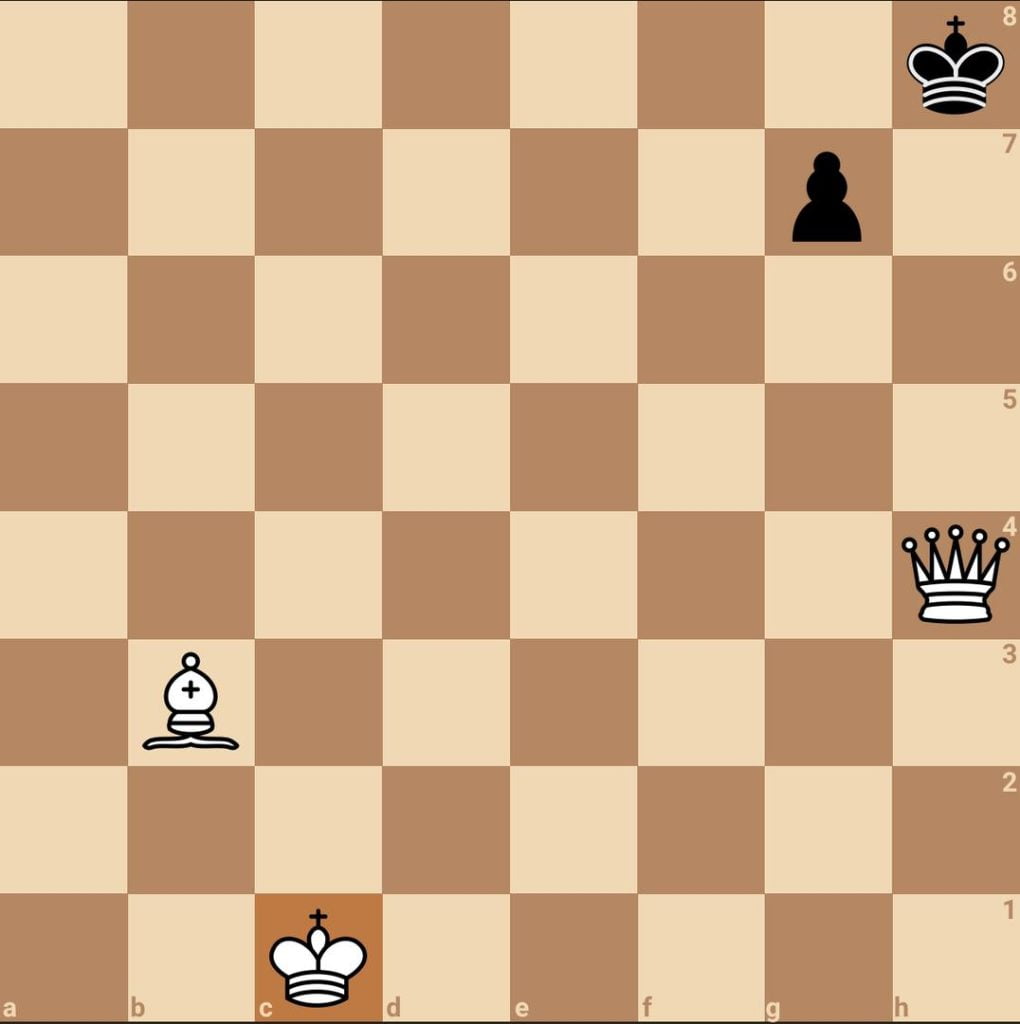
The edged king has its flight squares obstructed laterally by the bishop and diagonally by his pawn. Then the queen delivers checkmate horizontally or vertically depending on how the bishop restricts the king.
26. Hook Mate
Materials: Rook, Knight, pawn, enemy pawn
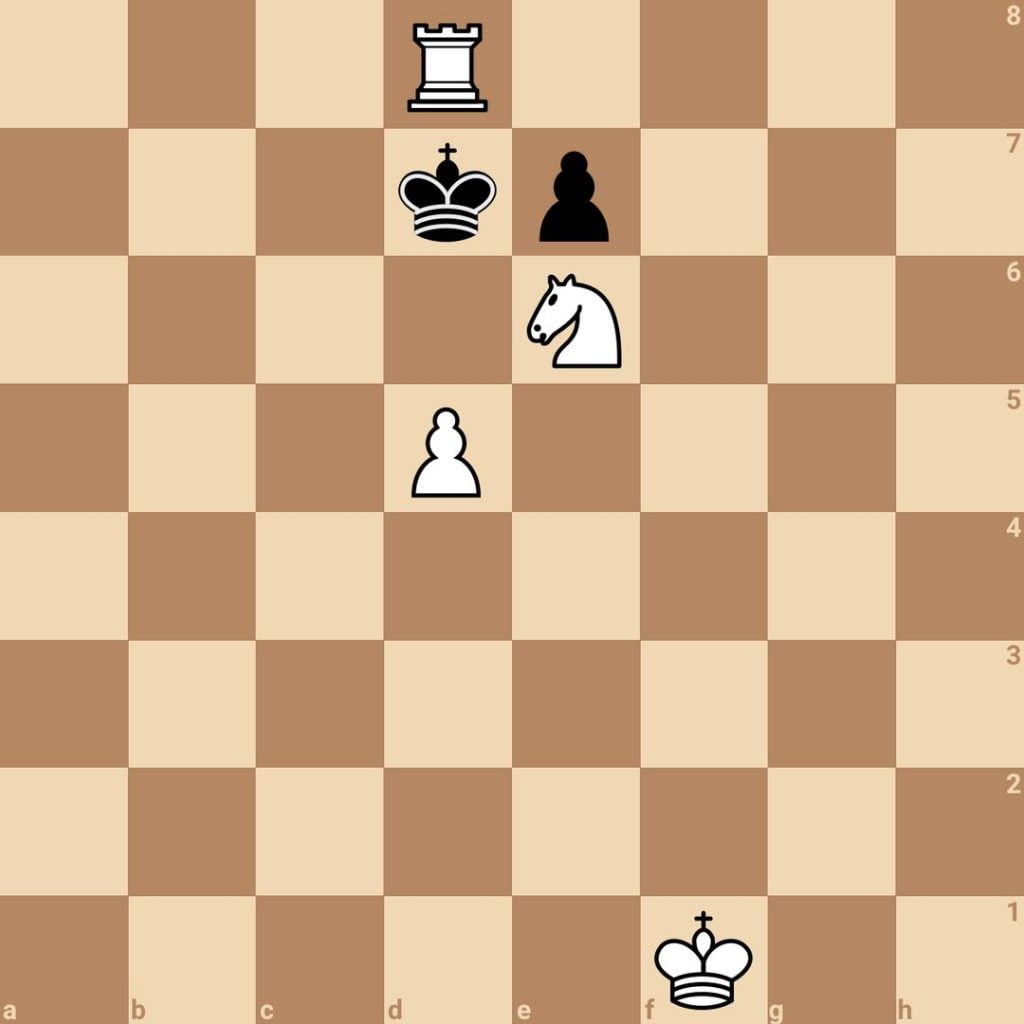
The rook, who delivers the checkmate, is protected by the knight, who also receives protection from a pawn. Finally, a friendly pawn sits laterally to the attacked king, blocking his only flight square.
After the checkmate, the shape of the position inspires this checkmate pattern’s name. It forms the shape of a hook.
27. Max Lange’s Mate
Materials: Queen, Bishop, enemy pawns/pieces

Two of the king’s flight squares are occupied by friendly pawns, while the bishop, sitting directly opposite the king two files/ranks away, controls the final flight square. Then the queen, protected by the bishop, wins the game by checkmate.
28. Mayet’s Mate
Materials: Rook, Bishop, Enemy Pawn
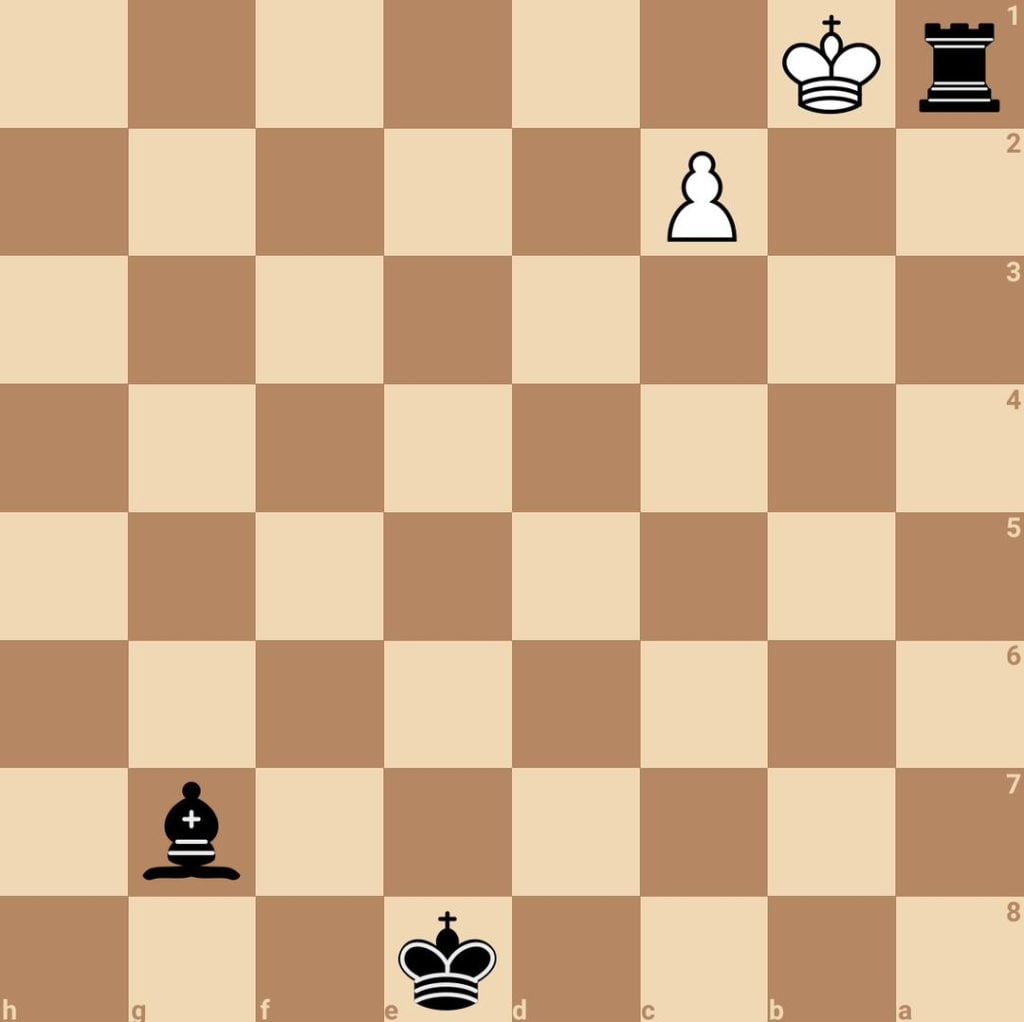
This type of checkmate pattern is no stranger to castled kings. The bishop controls two diagonal flight squares around the king while the rook delivers checkmate on one of the flight squares.
29. Morphy’s Mate
Materials: Rook, Bishop, Enemy pawn
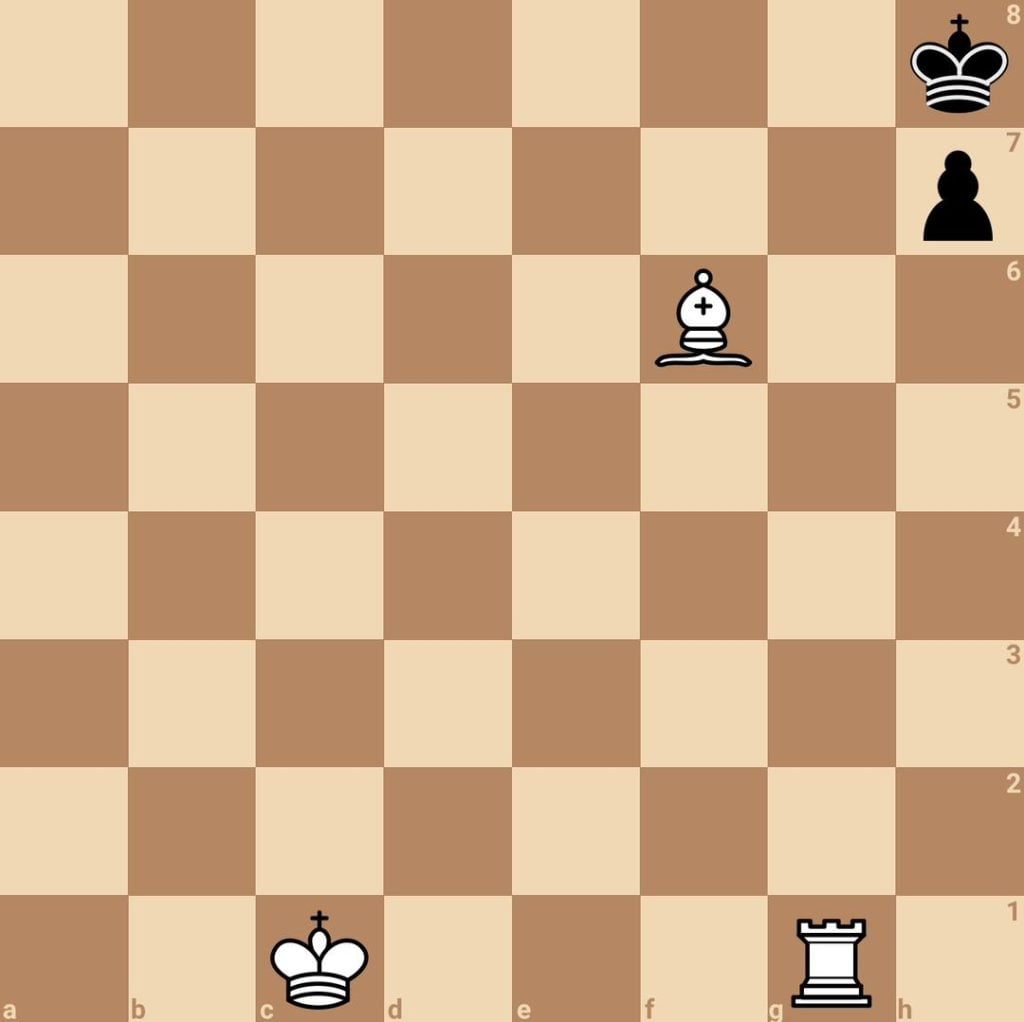
This checkmate pattern is highly similar to the corner mate, but in this case, the bishop delivers a checkmate, not a knight.
30. Opera Mate
Materials: Rook, Bishop, Enemy pawn
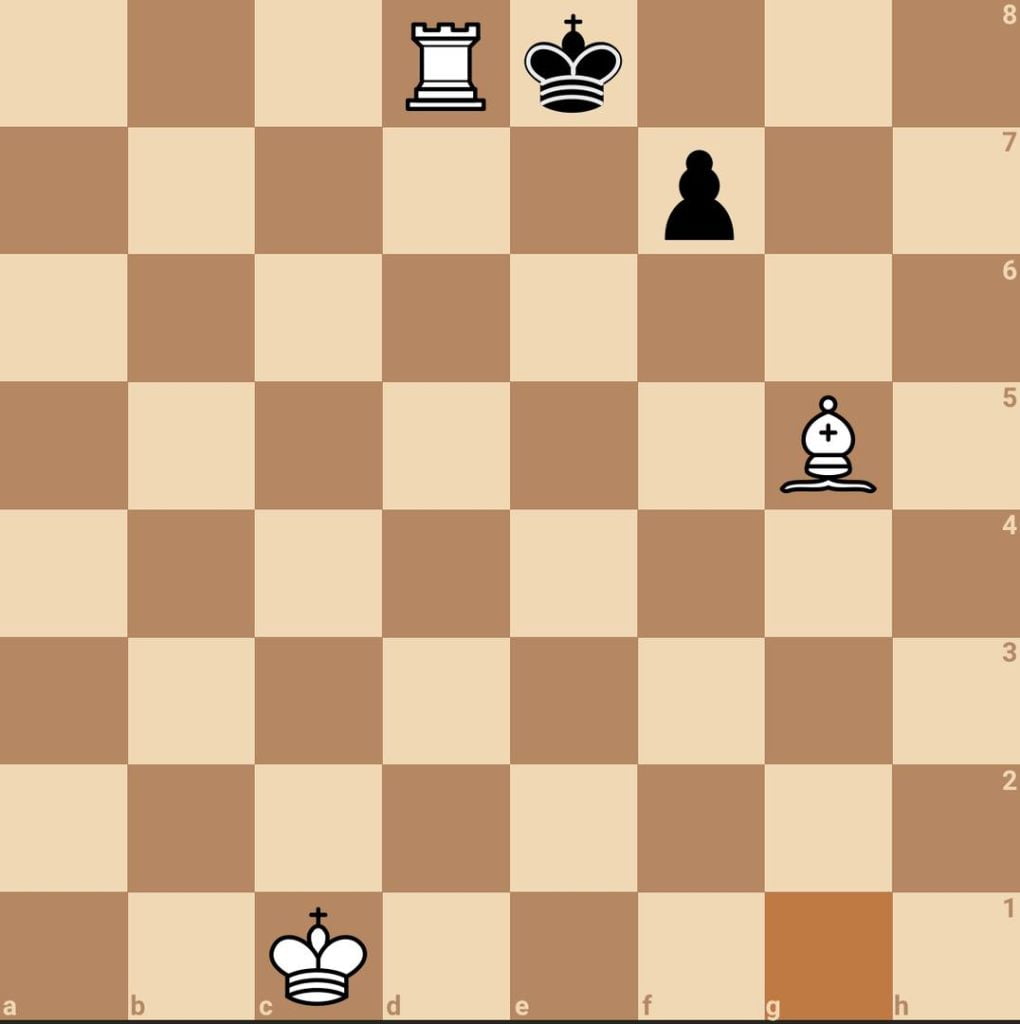
This checkmate pattern shares a striking resemblance with the Mayet’s Mate. The notable difference is that the king does not sit at the corner of the board.
31. Pawn/David and Goliath Mate
Materials: Pawn, Enemy Pieces, and sometimes, king
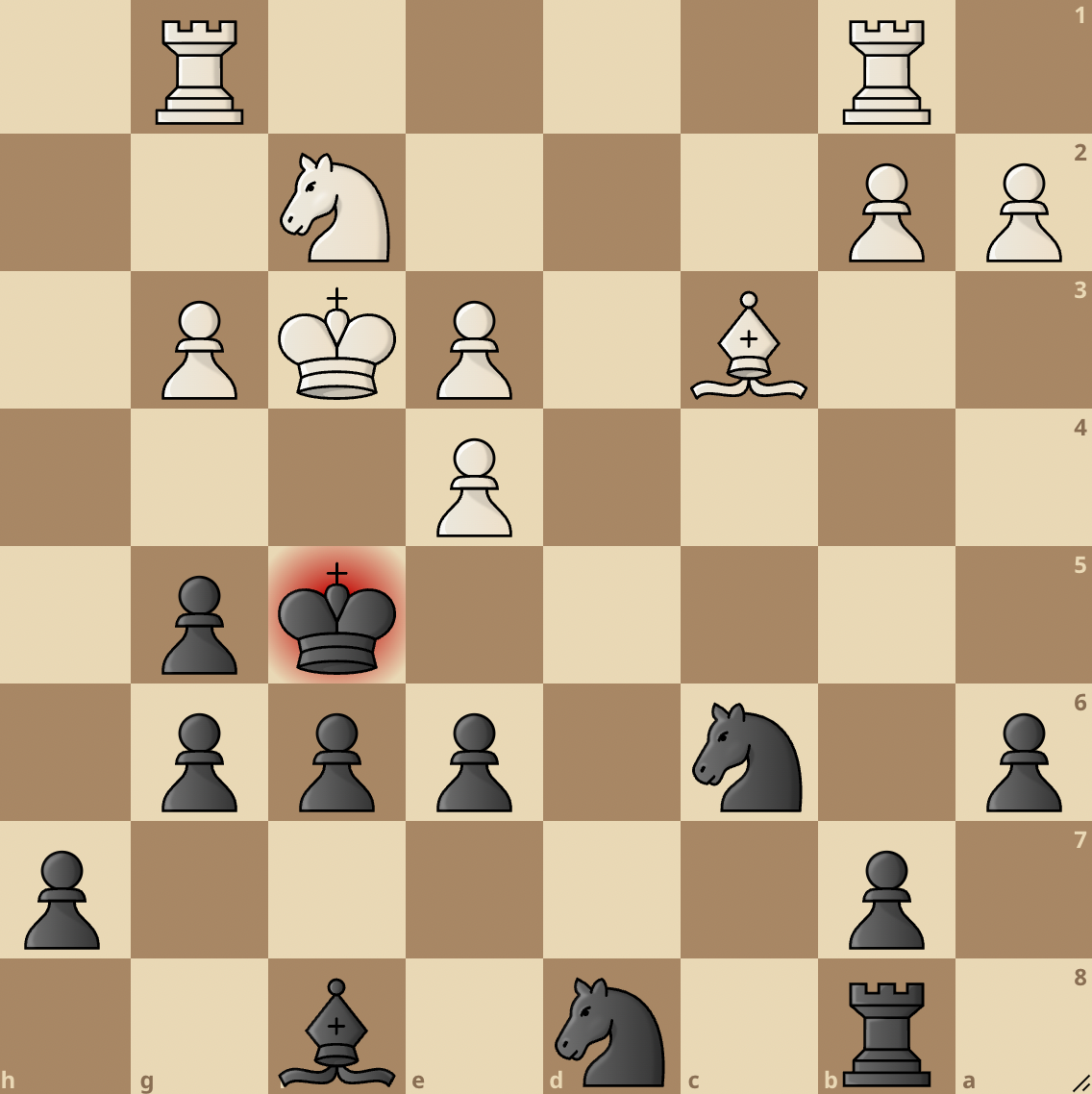
The idea of this checkmate pattern is a pawn delivering the final blow. This pattern is the only instance where a pawn delivers a checkmate without promotion. Therefore, any checkmate pattern executed by a pawn is called David and Goliath Mate, regardless of any other condition.
The reference is attained biblically from an underdog who overcame a mighty foe.
32. Pillsbury’s Mate
Materials: Rook, Bishop, Enemy pieces
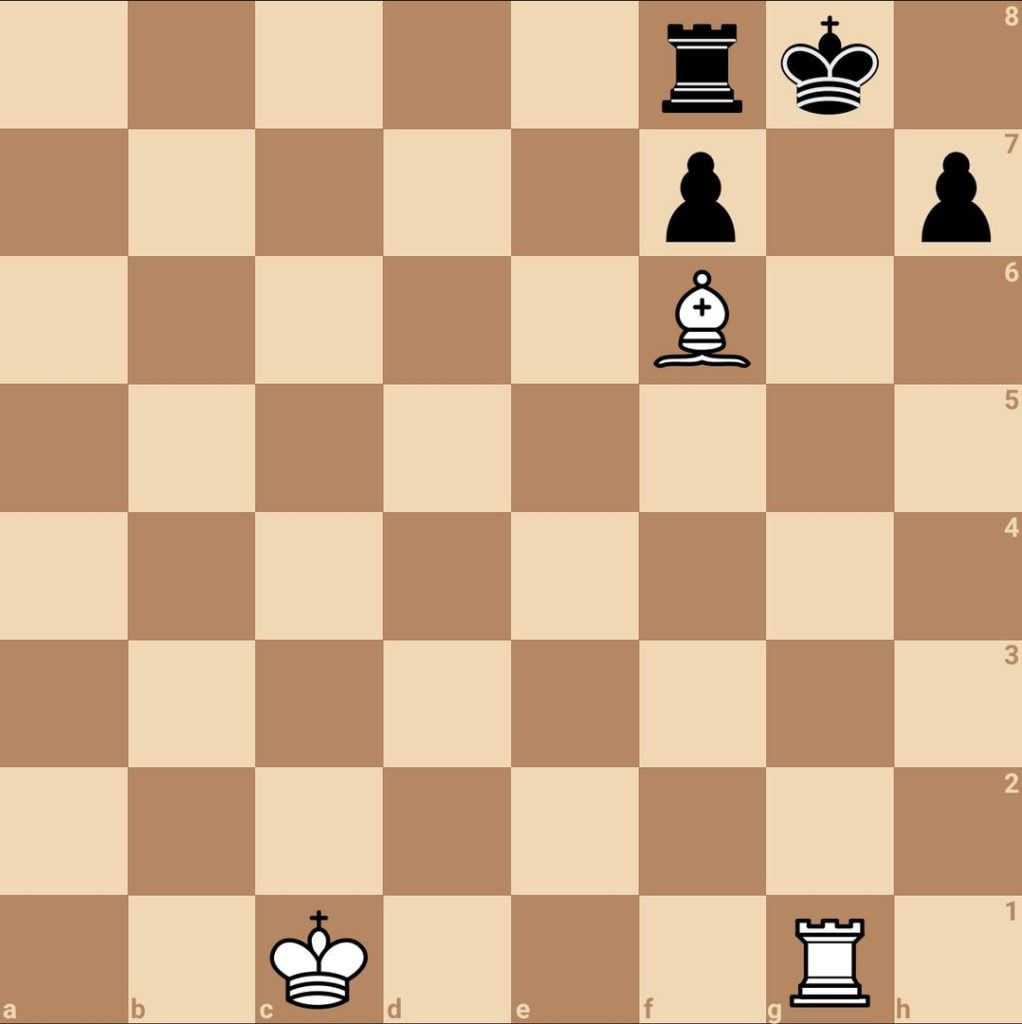
A few of his allies surround the attacked king as the bishop restricts his final flight squares. The unprotected rook then delivers the checkmate.
33. Swallow’s Tail/Gueridon Mate
Materials: Queen, Rook/Bishop
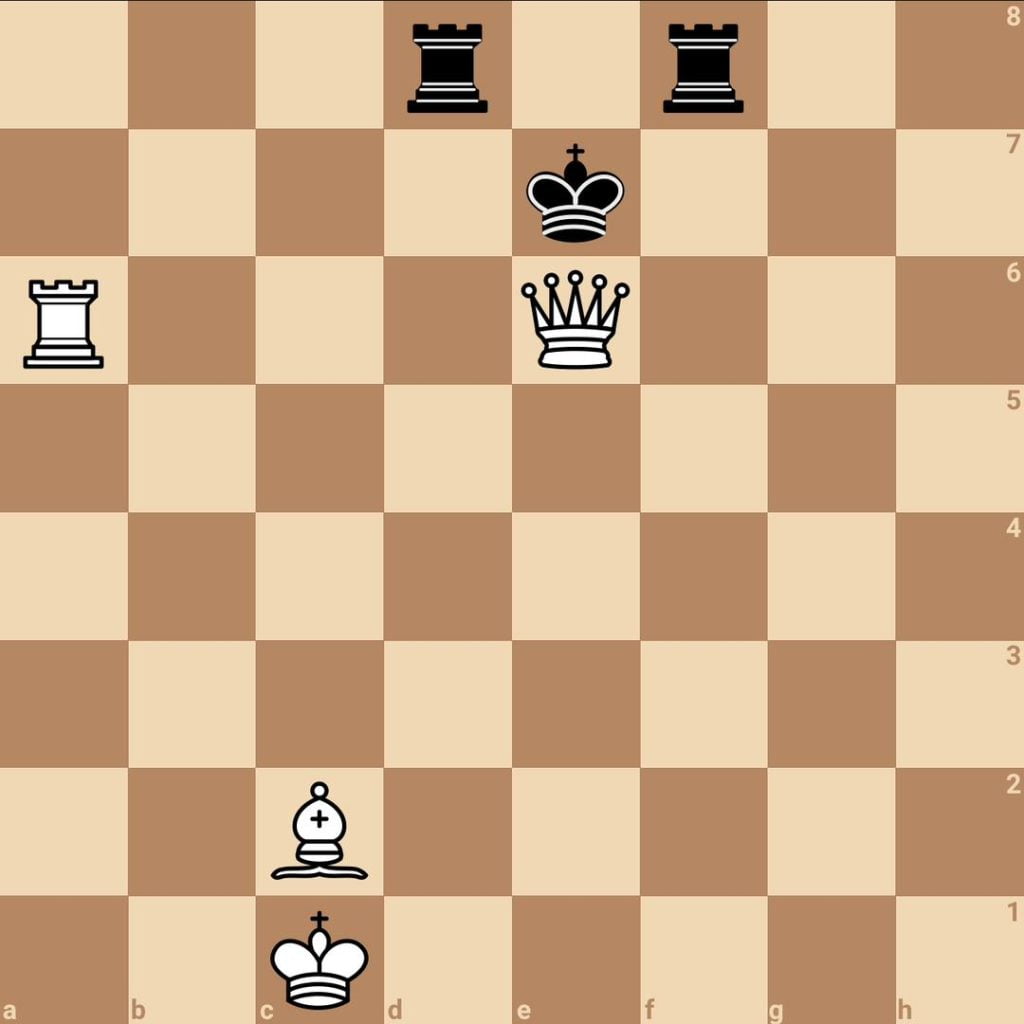
This checkmate pattern looks like the Epaulette Mate because of the friendly pieces positioned laterally below the king. These pieces block the king’s crucial flight squares and allow the queen to seal the checkmate.
The difference between Gueridon Mate and the Epaulette Mate is the striking queen, in this case, enjoys protection from either a bishop or a rook.
34. Vukovic’s Mate
Materials: King, Rook, Knight
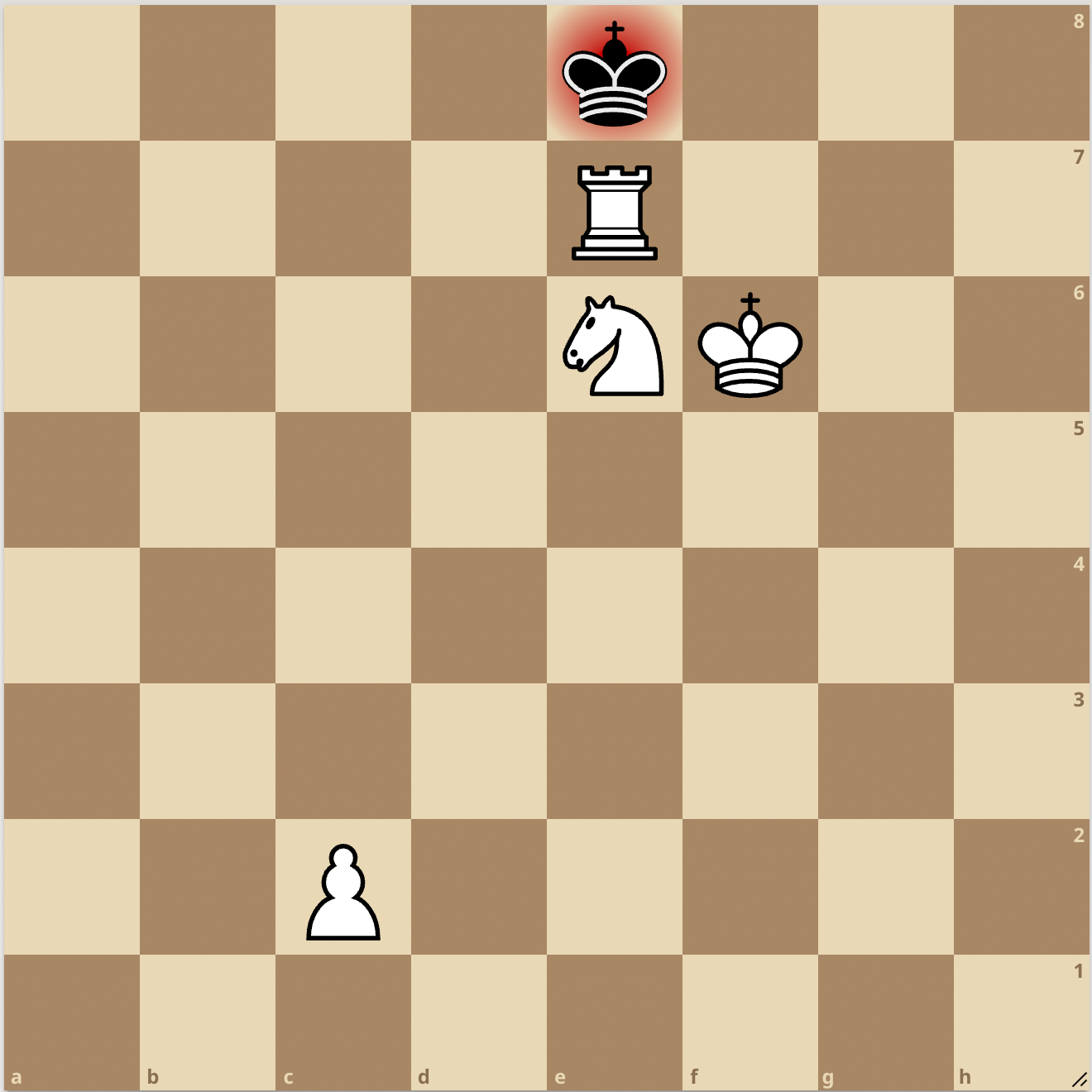
The attacking king comes close to the enemy king, while the other pieces restrict the squares around the enemy king. Finally, the rook seals the king to the back rank while the knight waits for the perfect chance to curtail the king’s sideways movement.
After total restriction, the rook lands the checkmate thanks to protection from the king.
Advanced Checkmate Patterns
These checkmate patterns are most challenging to initiate and rarely occur in a game.
35. Anastasia’s Mate
Materials: Rook, Knight, Enemy pawn
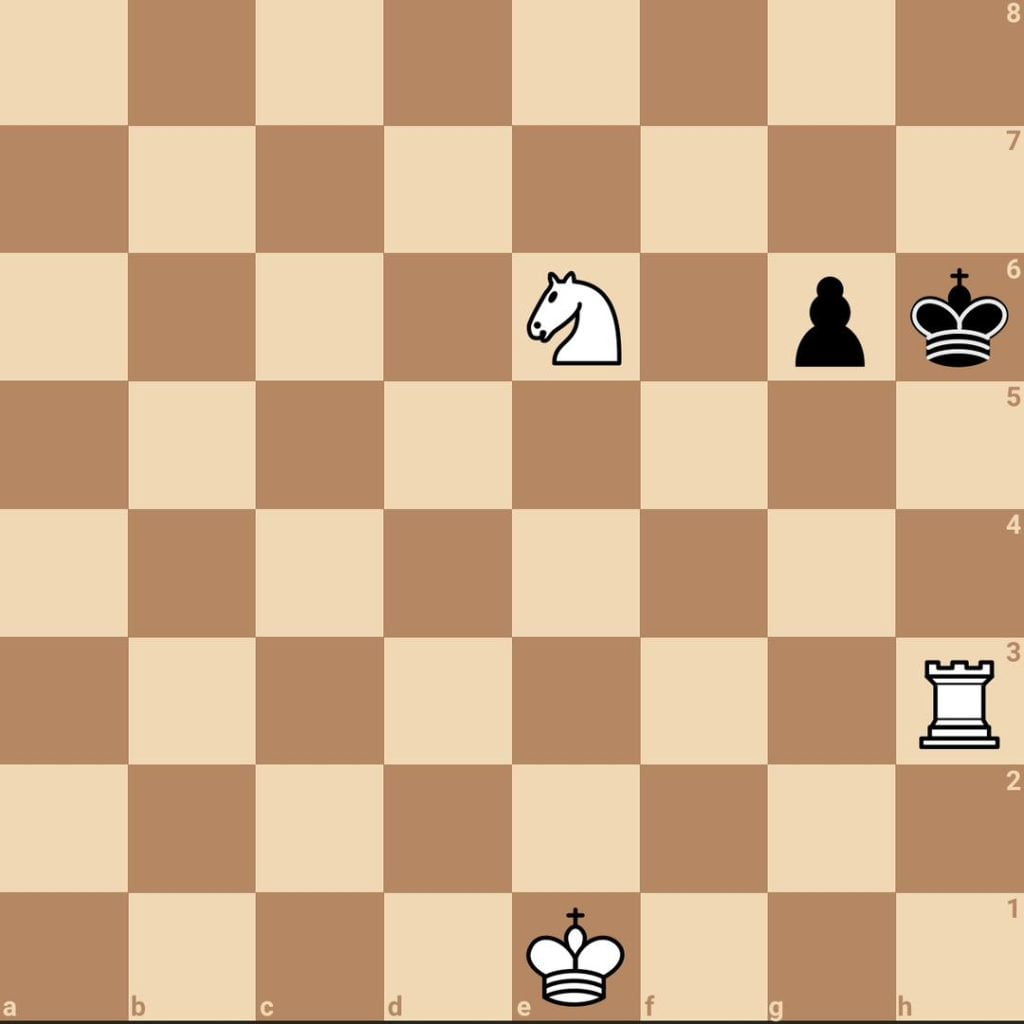
The king must be on the back rank to achieve this checkmate pattern. A friendly pawn must be in front of him while a knight controls the two diagonal squares in front of him. Then the rook strikes the final blow for a checkmate that looks similar to the back-rank mate.
36. King and Two Knights Mate
Materials: King, Two Knights
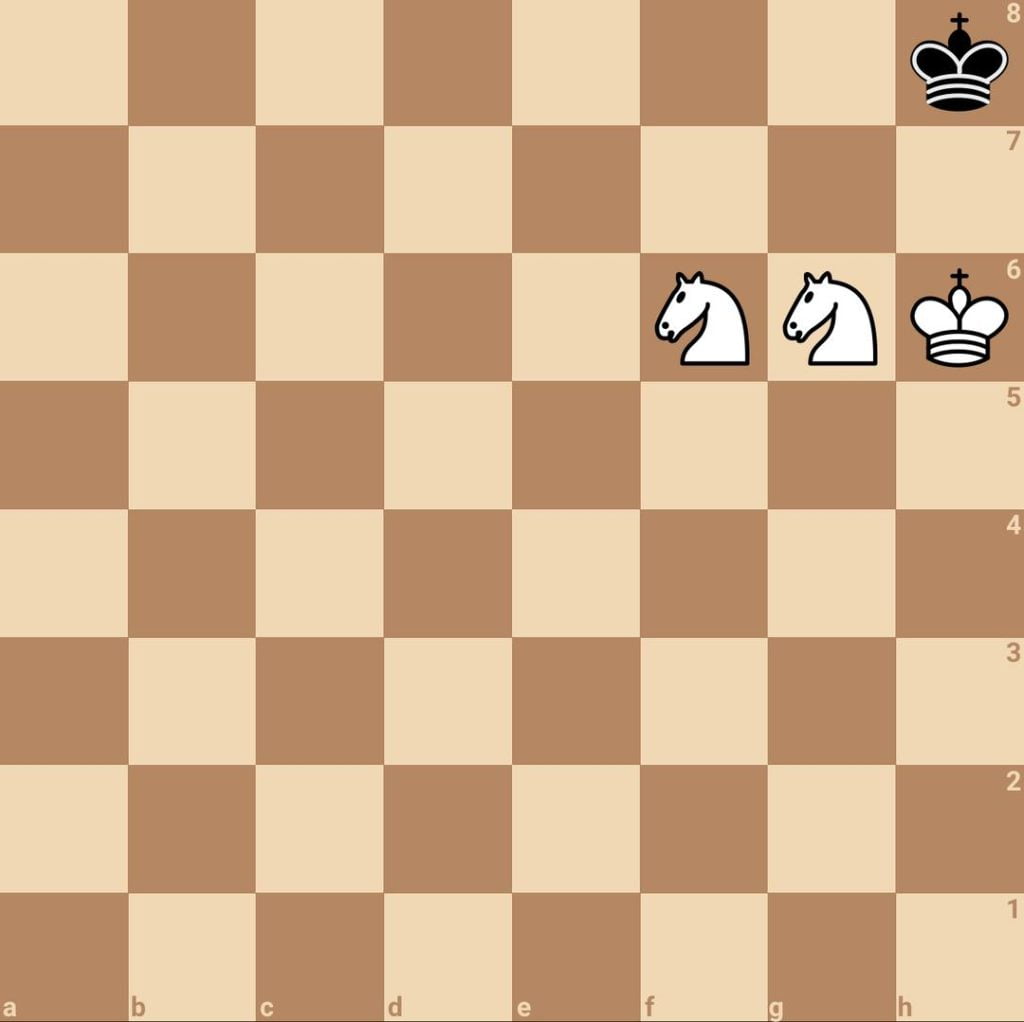
These materials cannot lead to a checkmate if both sides play accurately. Therefore, checkmate is only possible when the defending player makes a colossal blunder to throw the game away. The king will be checkmated when he is forced to the corner of the board.
37. Double Knight Mate
Materials: Two Knights, Enemy pieces

We have already established that two knights alone cannot deliver a checkmate, even with the help of a king. Therefore, a double knight mate is feasible mainly in the middle game, where more pieces are still on the board. Those pieces will restrict every flight square available to the king in this case.
38. Dovetail/Cozio’s mate
Materials: Queen, A supporting piece, Enemy pieces
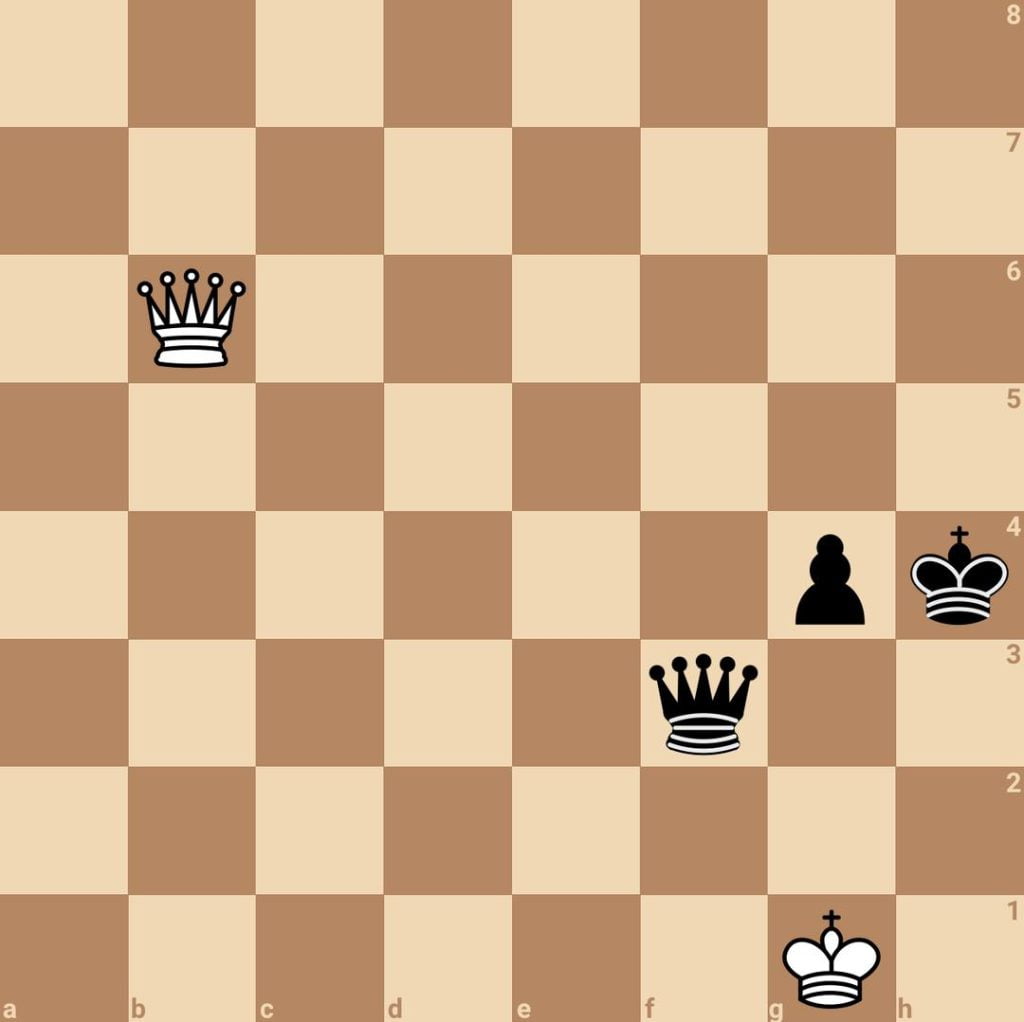
This checkmate pattern is scarce to come across. The king must meddle in a trap-like situation that limits his flight squares. The queen, who delivers the checkmate, will require the support of a piece already stationed in the trap. Here White can deliver mate after 1. Qh6+! Kg3 2. Qh2#
It will take quite a remarkable blunder for anyone to experience this type of mate, so if you’re presented with the opportunity, you must know how to seize it!
39. Reti’s mate
Materials: Rook, Bishop
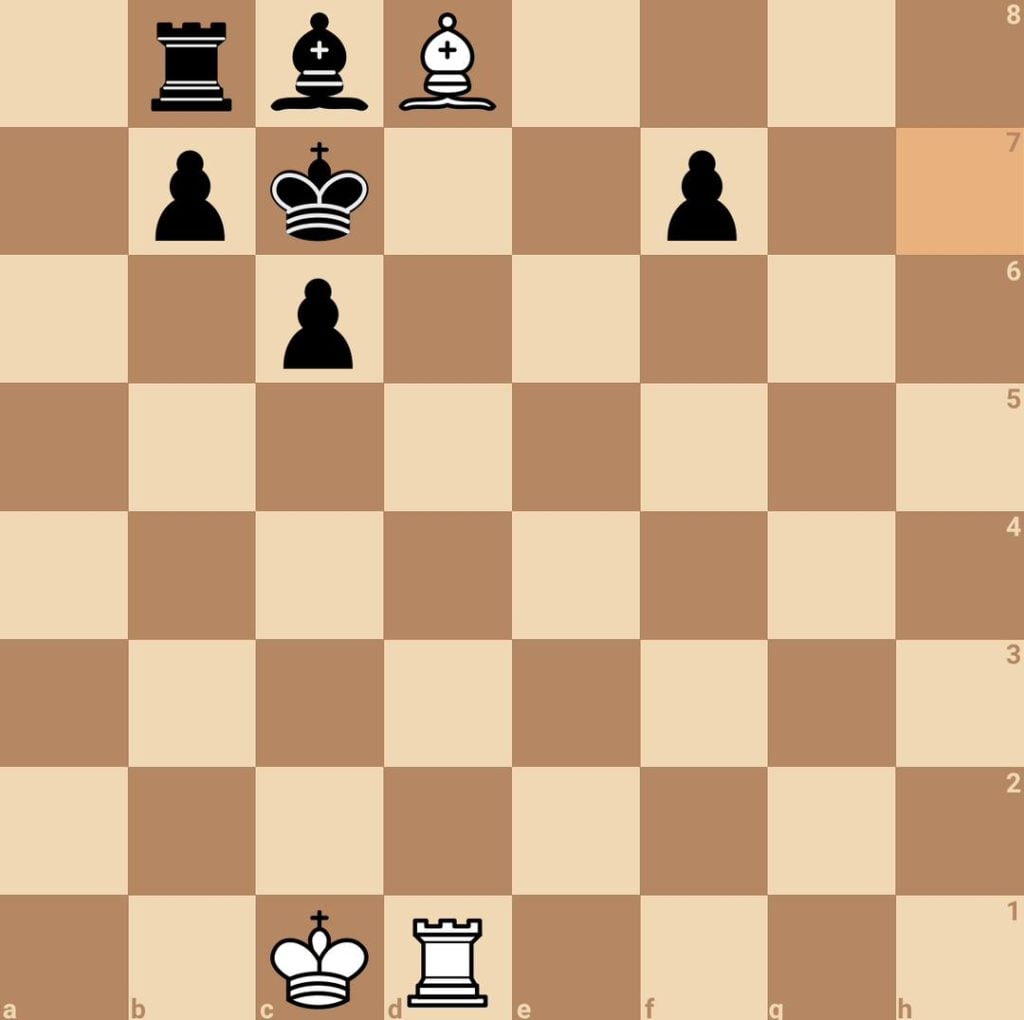
Richard Reti used this checkmate pattern to defeat Savielly Tartakower in 11 moves. Hence, the checkmate he used in that game was named after him. His allies almost entirely enclose the king while the protected bishop lands a close-ranged checkmate.
40. Suffocation mate
Materials: Bishop, Knight, Enemy Pawns and Pieces
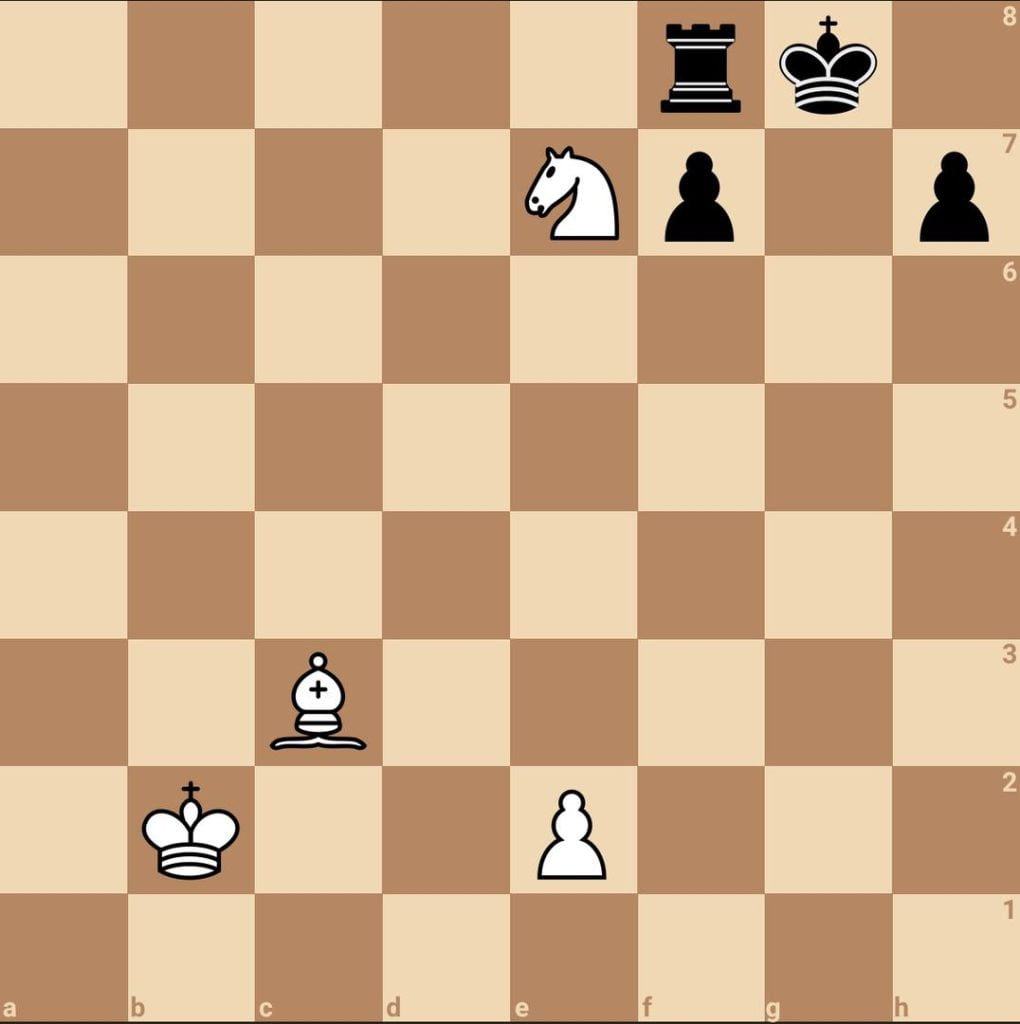
This checkmate pattern is as rare as it is fancy. It appears like the Pillsbury Mate, where the bishop restricts all the king’s flight squares. Therefore, all the requirements of the knight in this position is to deliver a checkmate.
Conclusion on Checkmate Patterns
Checkmate is the primary goal of every chess game. Therefore, knowing how to visualize or spring up a checkmate option from any position is critical. We have sectioned these known checkmate patterns to help you prioritize which ones to learn according to your skill level.
Lastly, as you try to achieve each of these checkmate patterns, always be on the lookout for stalemates because it is possible in every checkmate variation. Always mentally visualize the outcome of a move before making it.
Frequently Asked Questions (FAQs)
What is the checkmate pattern?
The checkmate pattern is a specific arrangement of chess pieces on the board that results in the checkmate of the opposing king. This means that the king is in a position where it cannot escape capture and the game is over.
How do I recognize the checkmate pattern?
There are several common checkmate patterns that you can look for on the chess board. These include the Anastasia’s Mate, the Epaulette Mate, and the Back Rank Mate. In general, a checkmate pattern involves placing your pieces in a position where they can attack the opposing king from multiple directions, making it impossible for the king to escape.
How do I set up a checkmate pattern?
To set up a checkmate pattern, you will need to position your pieces in a way that allows them to attack the opposing king from multiple directions. This usually involves using your bishops, rooks, and queen to create a “web” of attacks around the king. You may also need to use your pawns and knights to block the king’s escape routes and prevent it from moving to safety.
How do I avoid falling into a checkmate pattern?
To avoid falling into a checkmate pattern, you should be mindful of the positions of your own pieces and try to keep your king protected at all times. You should also be aware of your opponent’s potential checkmate patterns and try to disrupt them by moving your pieces to block their attacks or capture their attacking pieces.
Can a checkmate pattern be broken or escaped?
It is possible to break or escape a checkmate pattern, but it can be very difficult to do so. If you are in a checkmate pattern, you may be able to move your king to a safer position or capture one of your opponent’s attacking pieces. However, this will usually require a lot of careful planning and precise execution, and it is not always possible to find a way out of the checkmate.







join the conversation